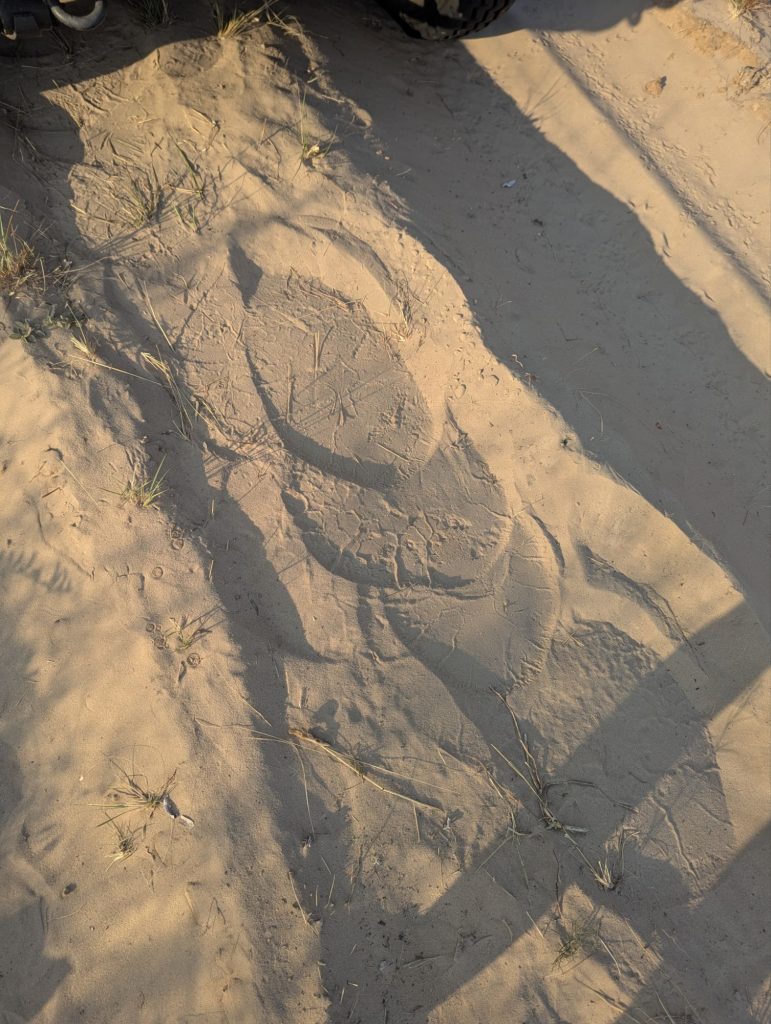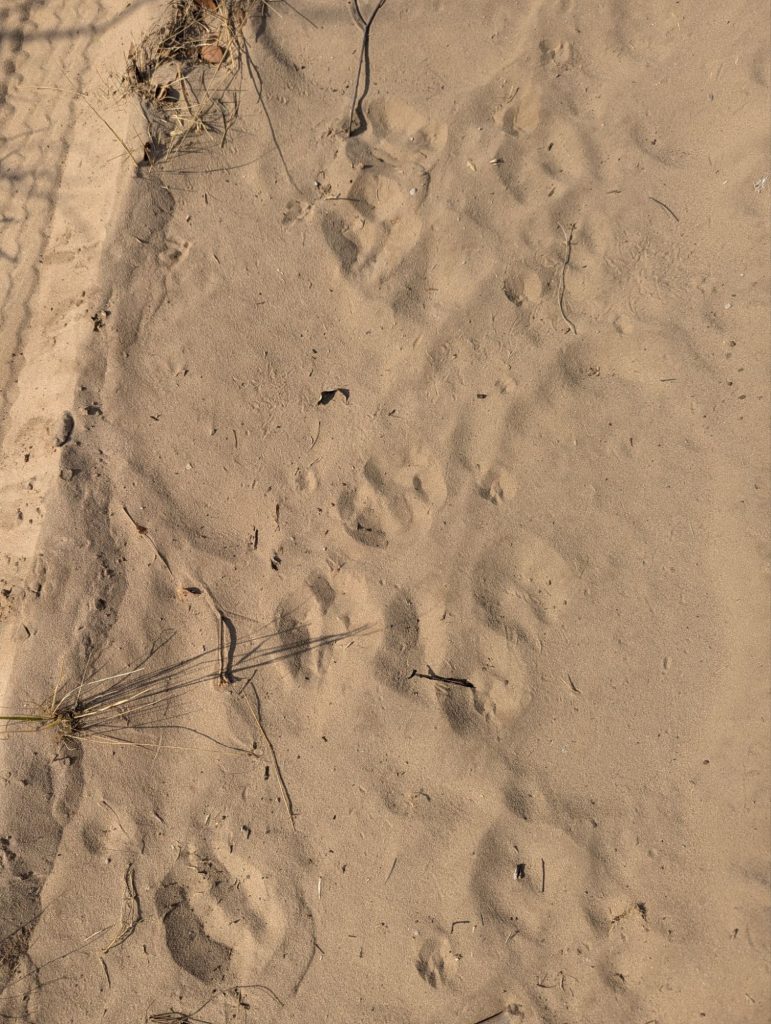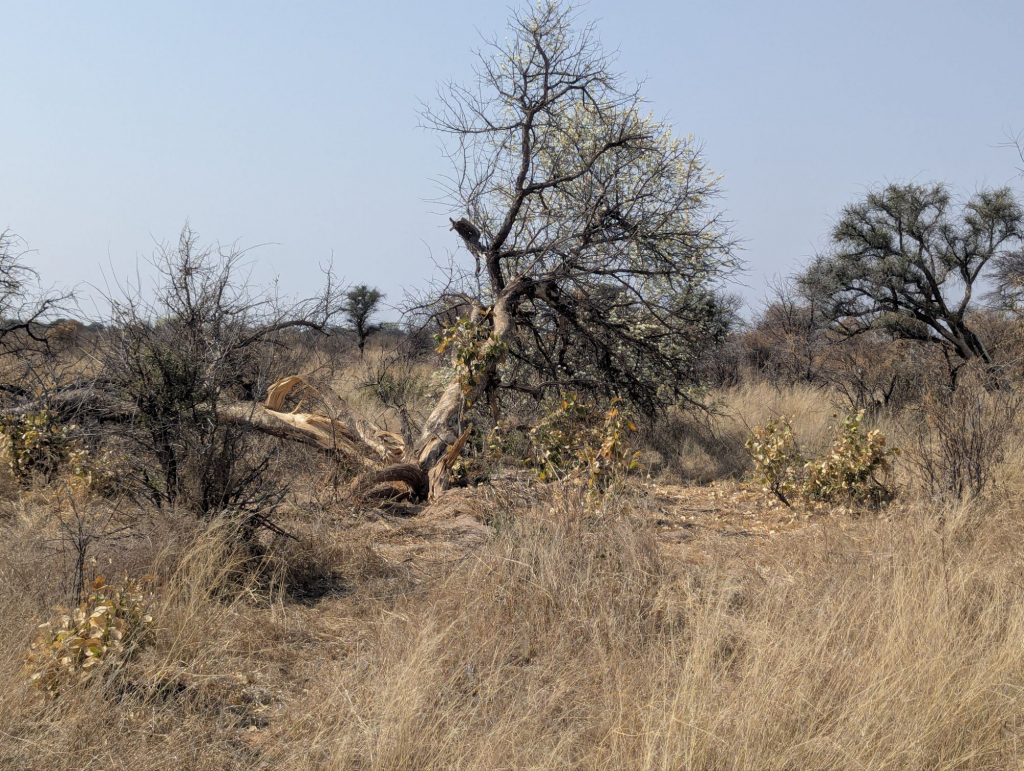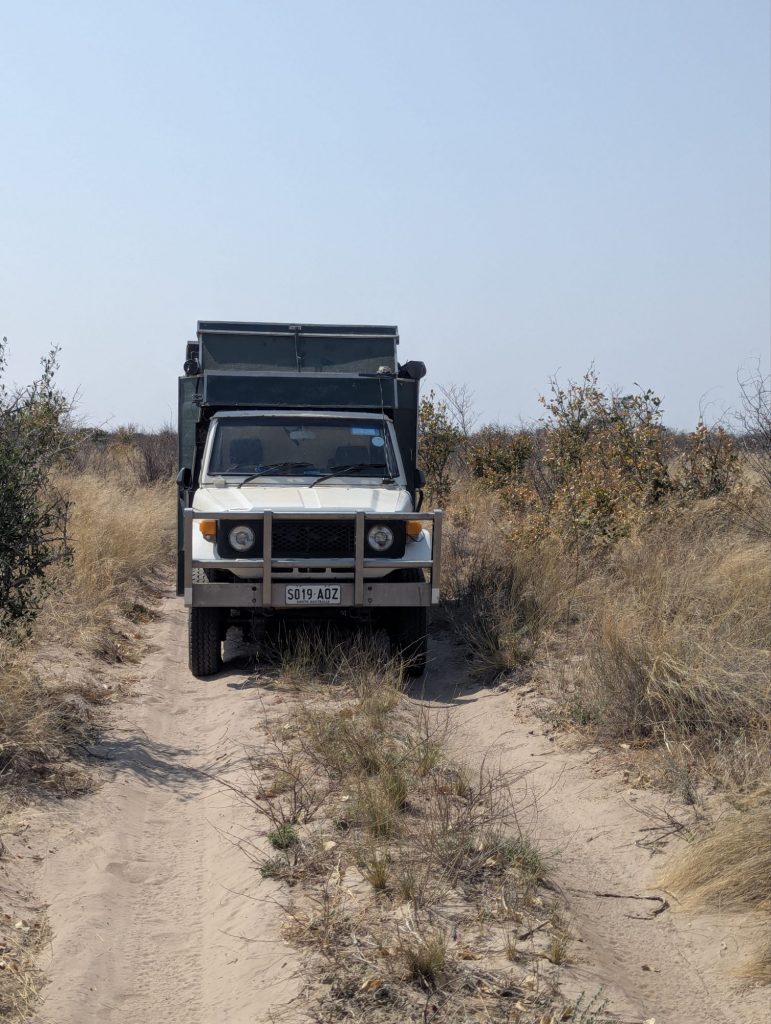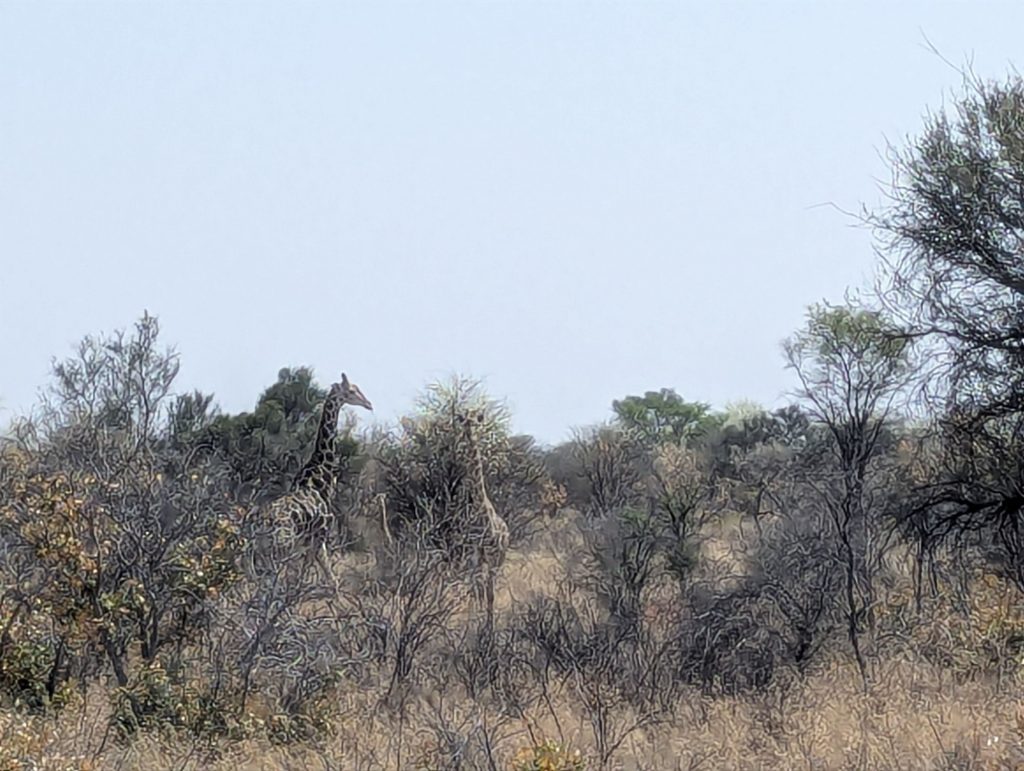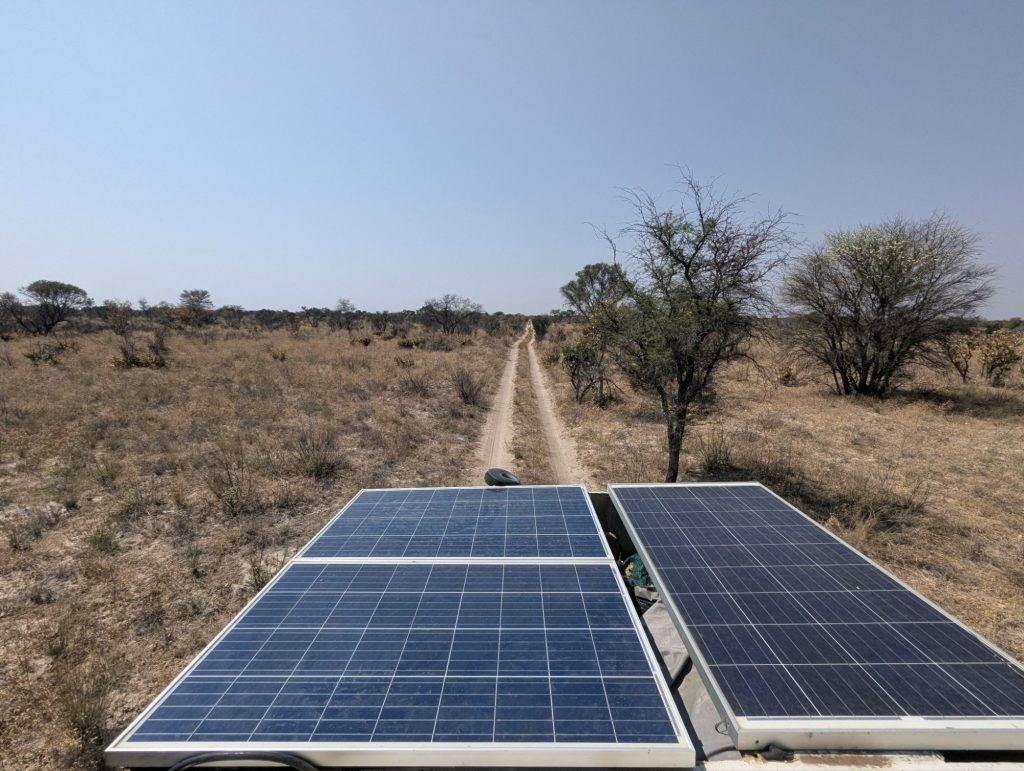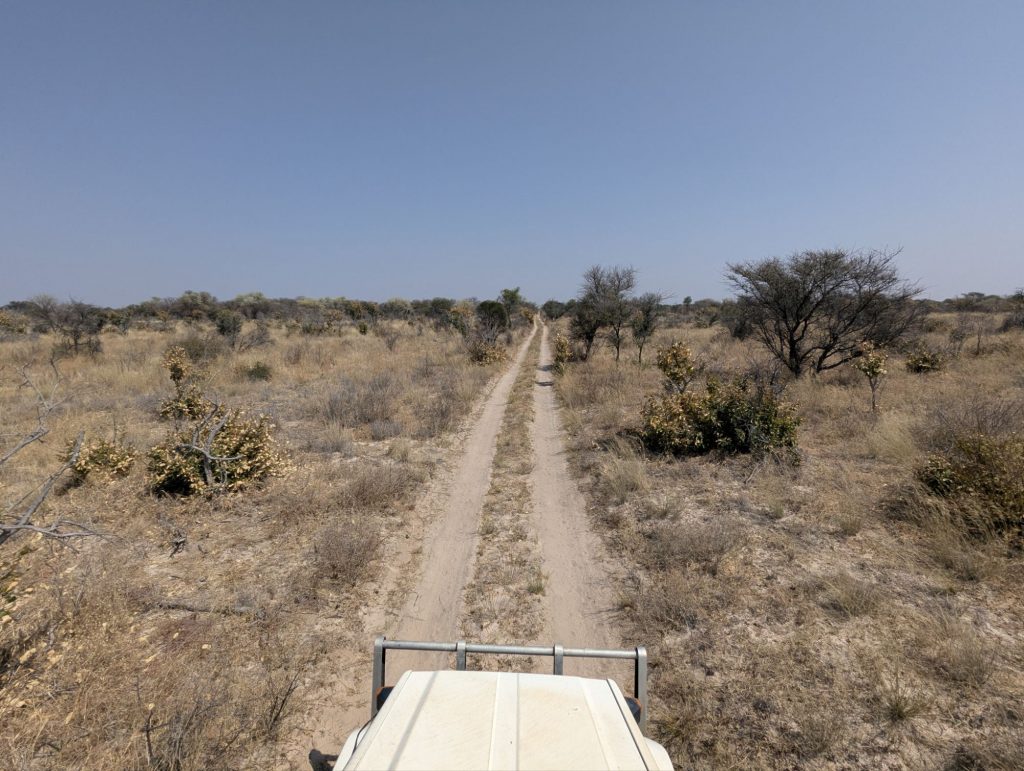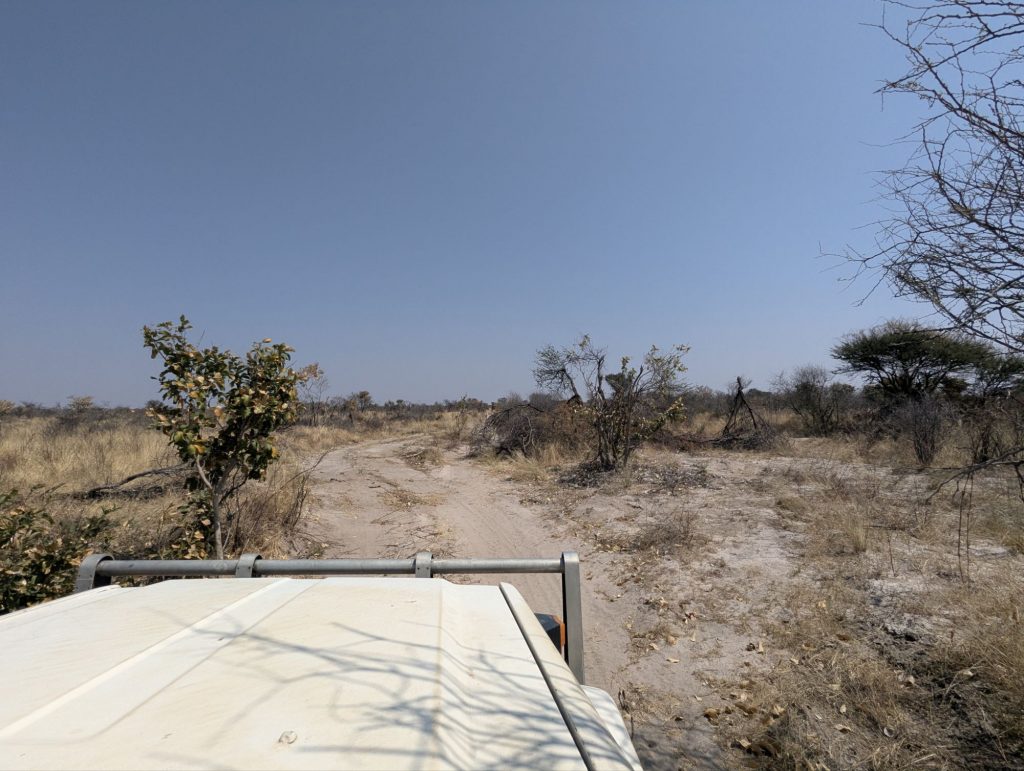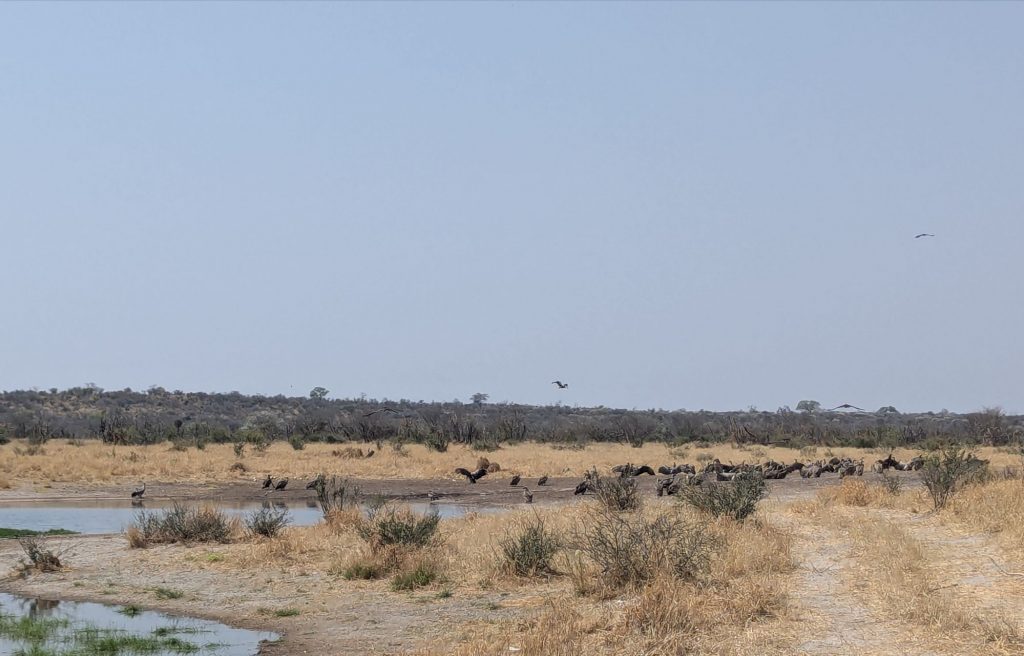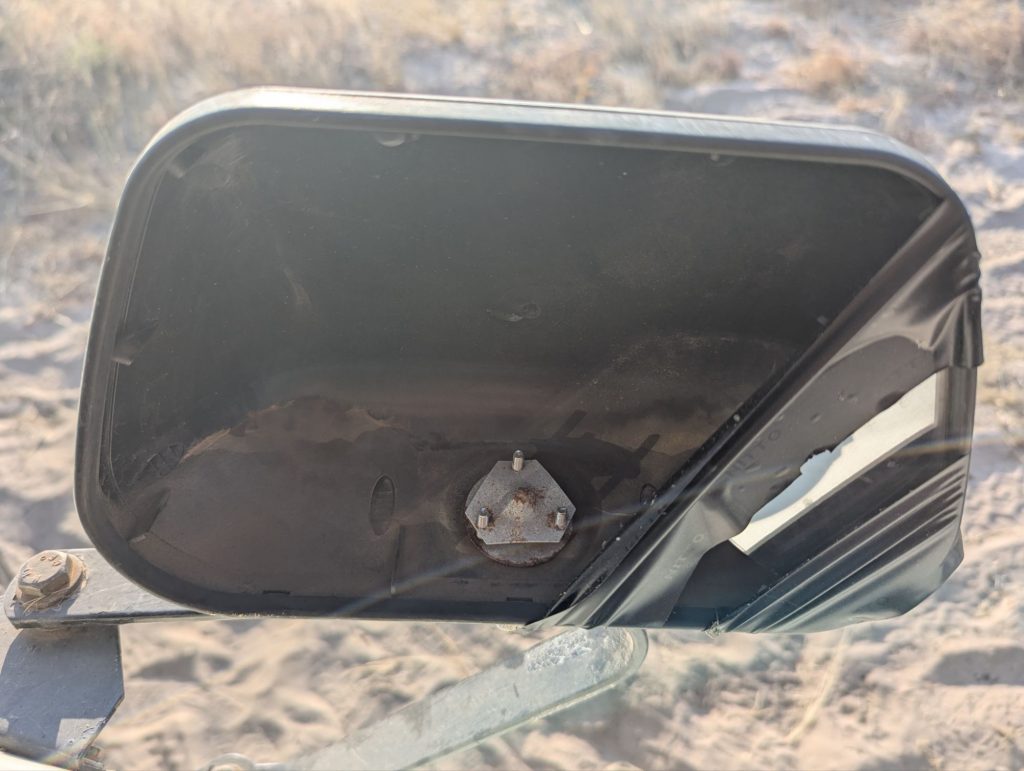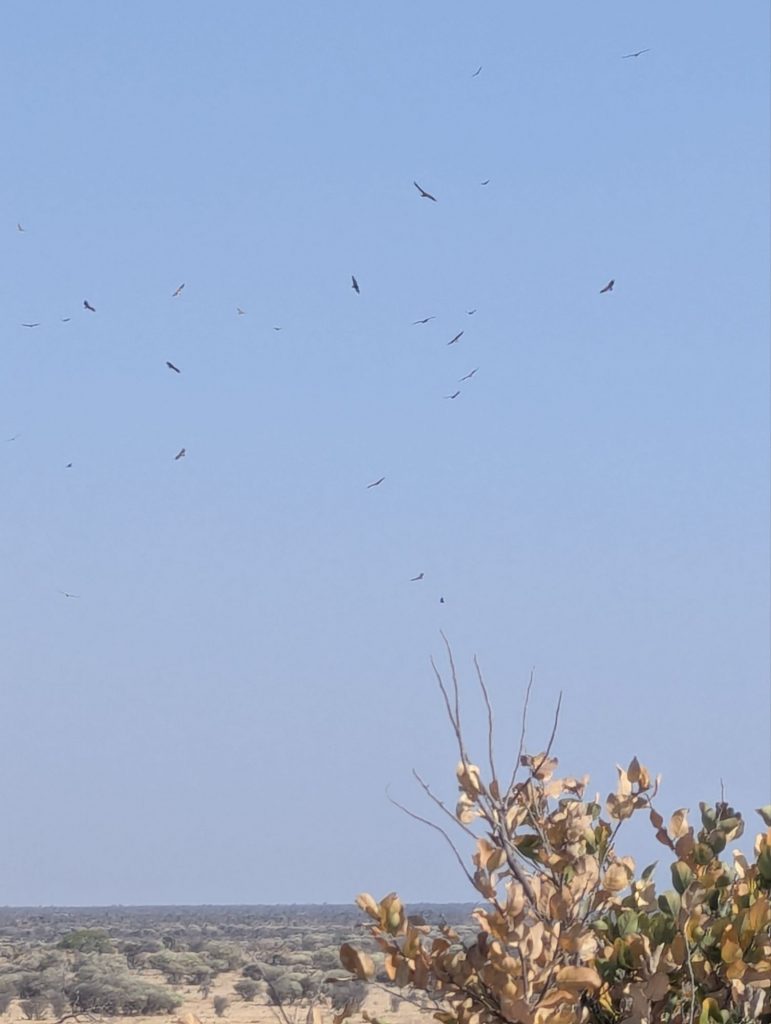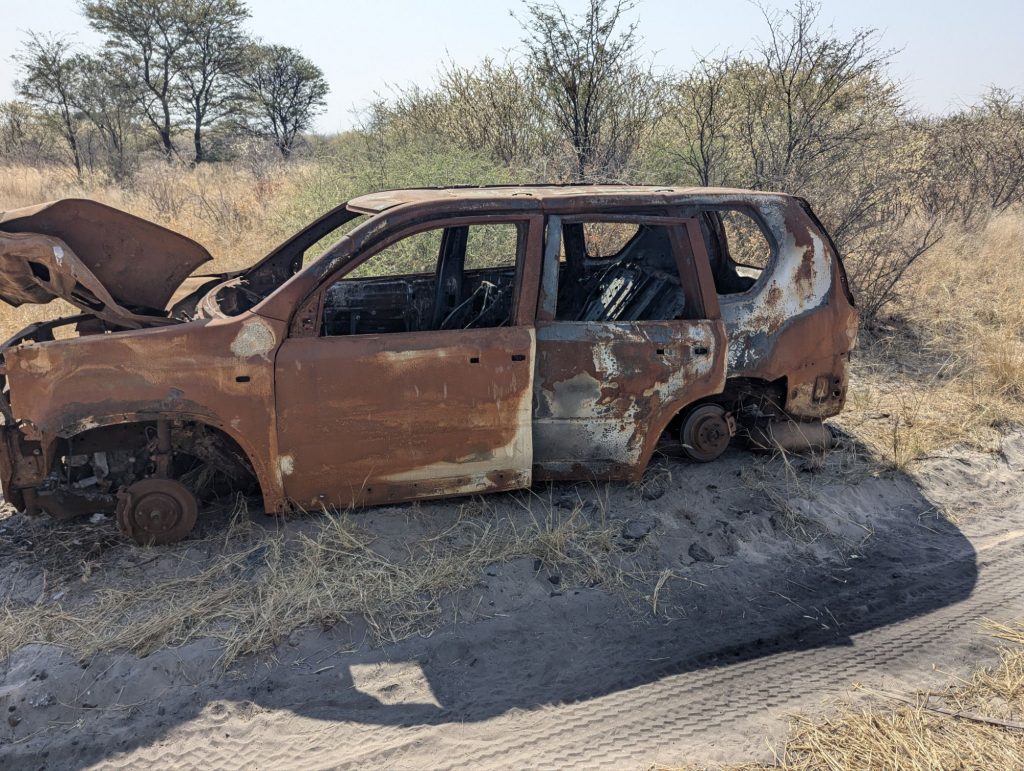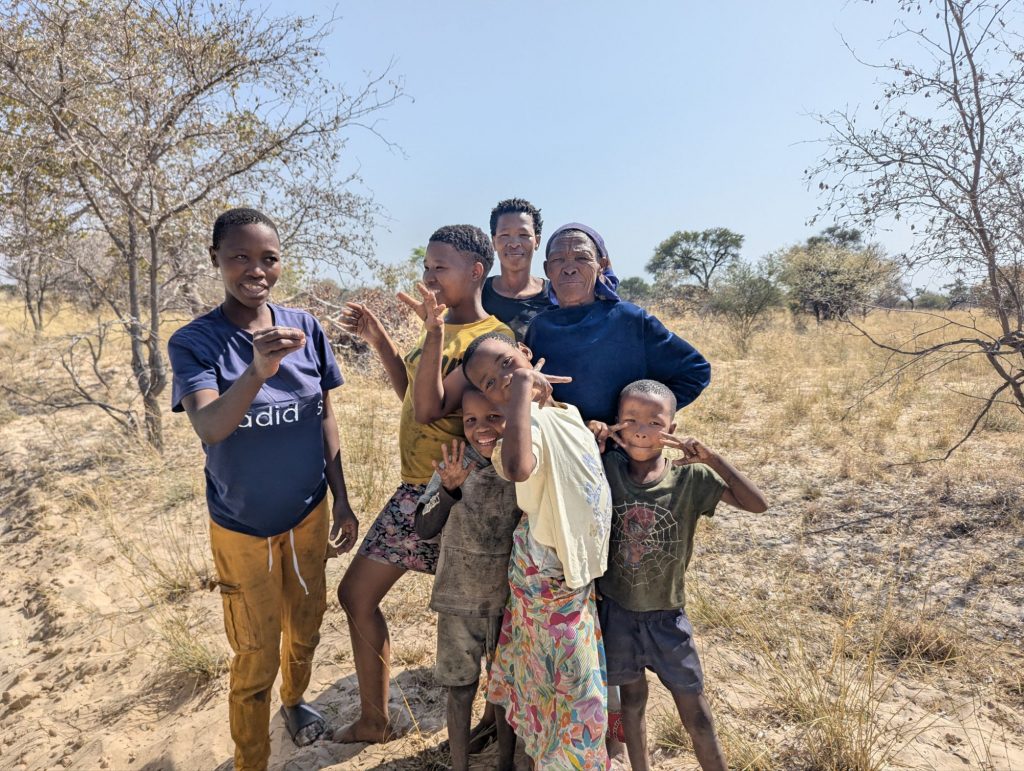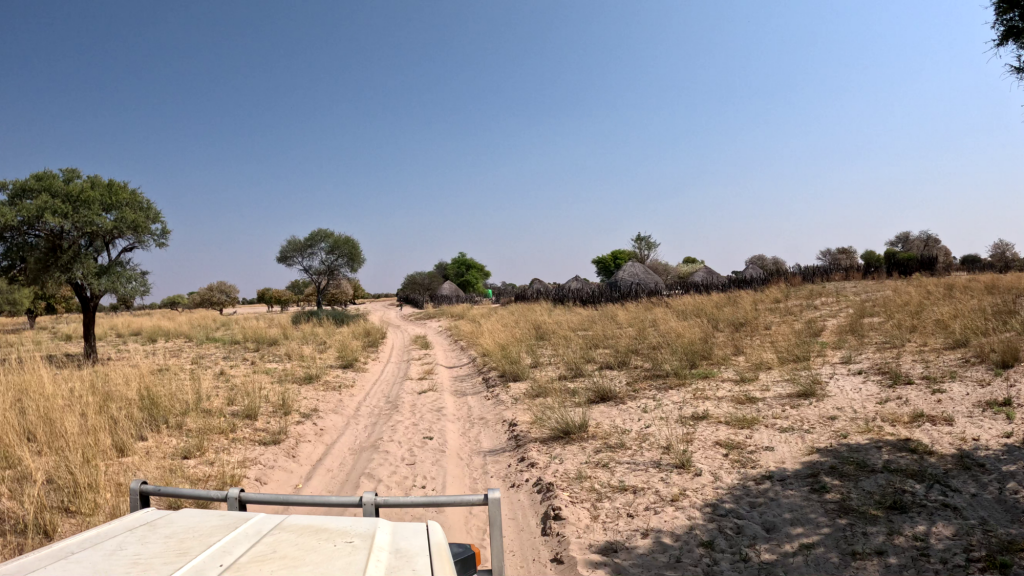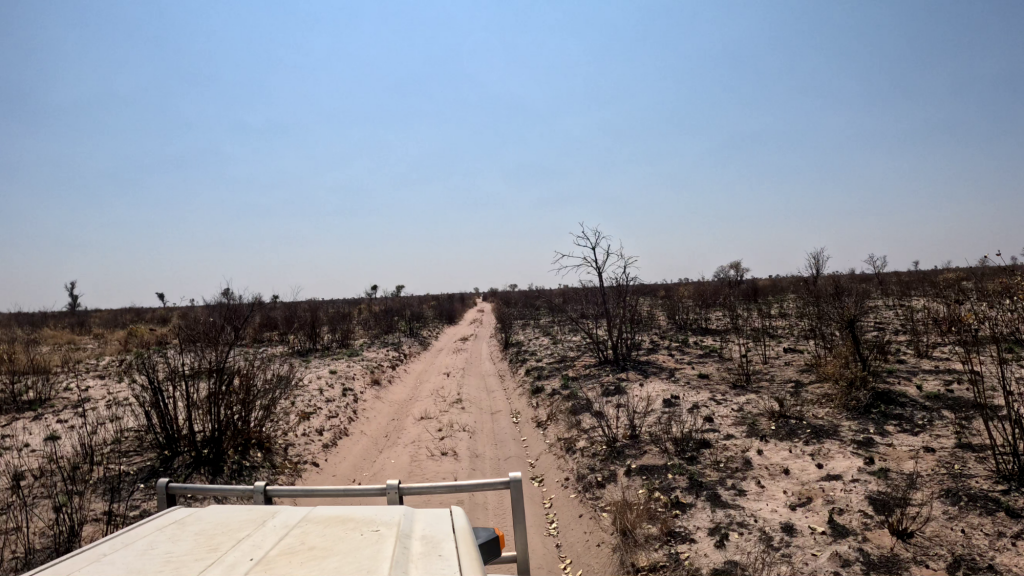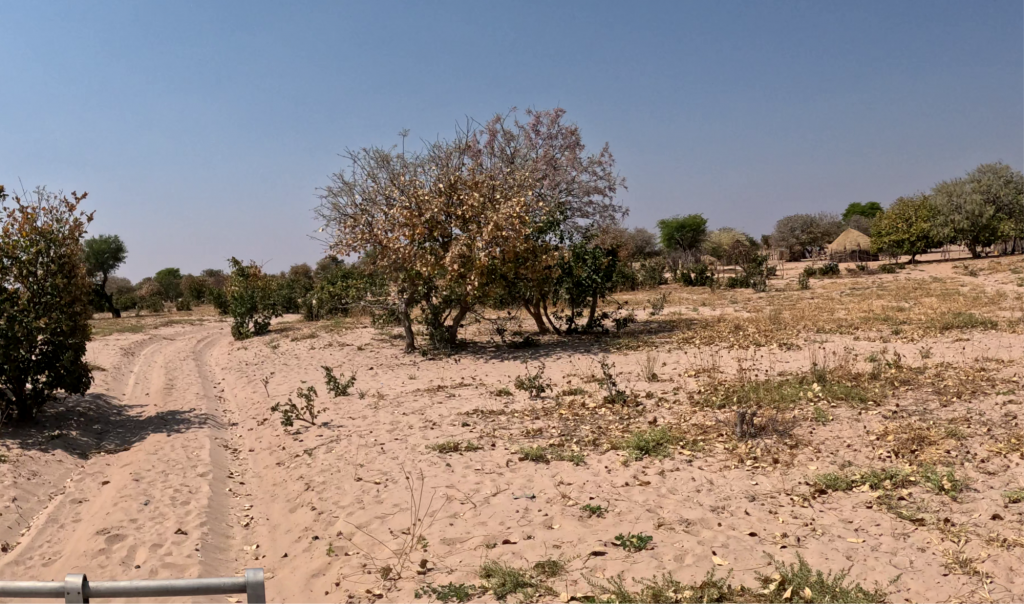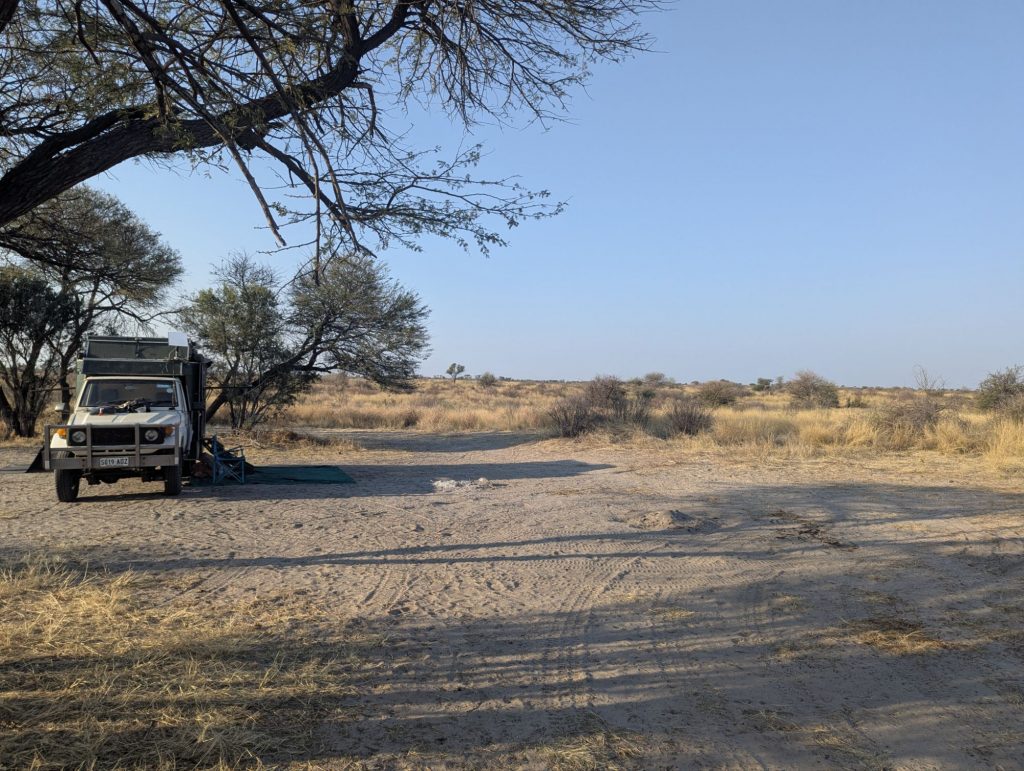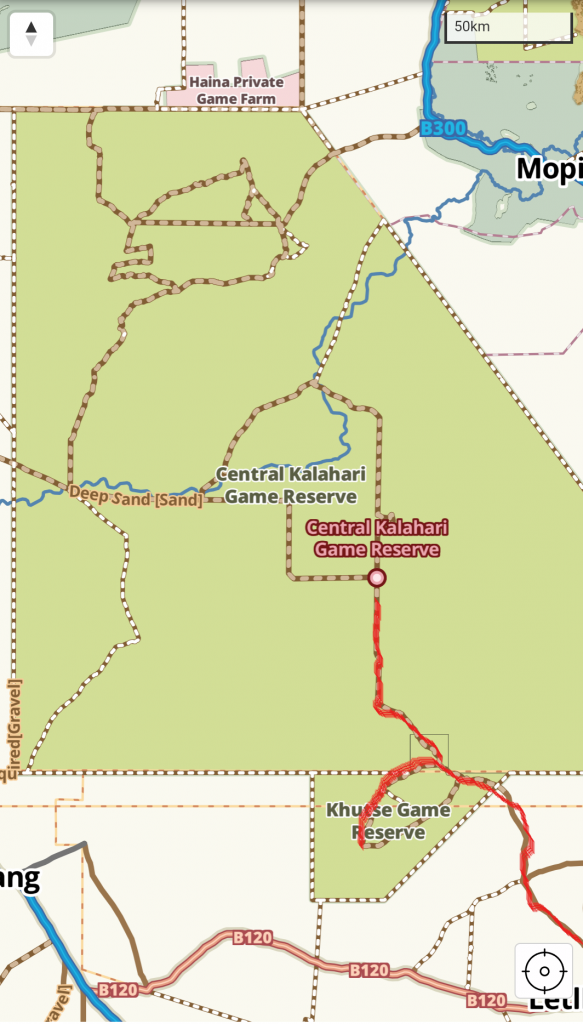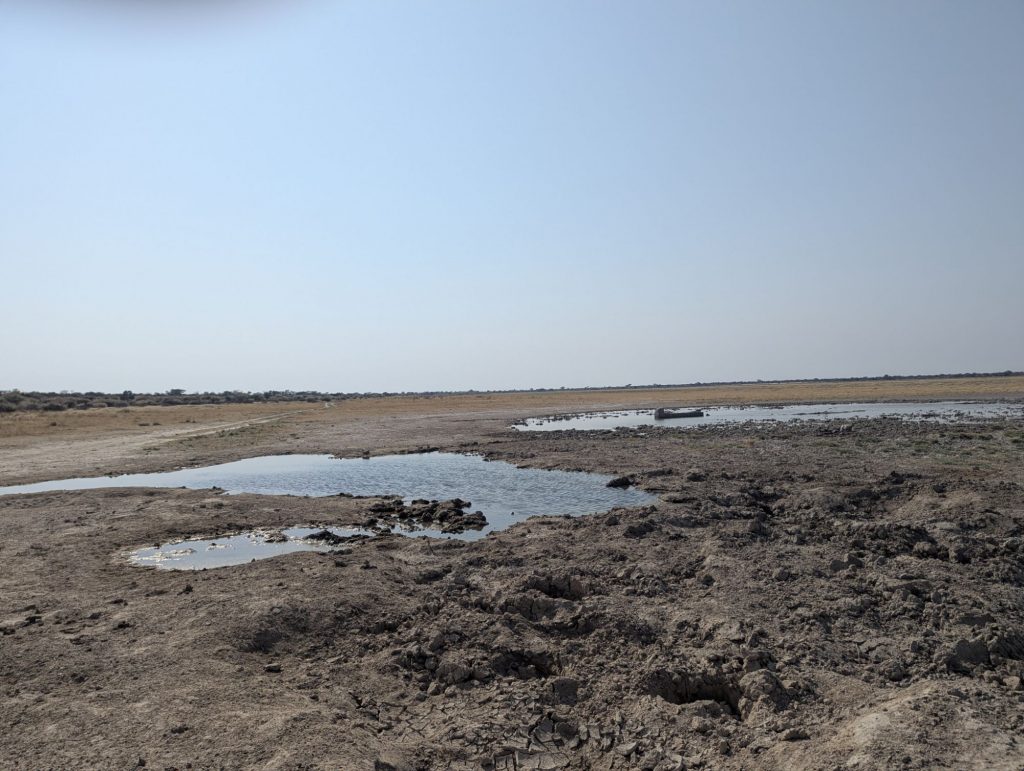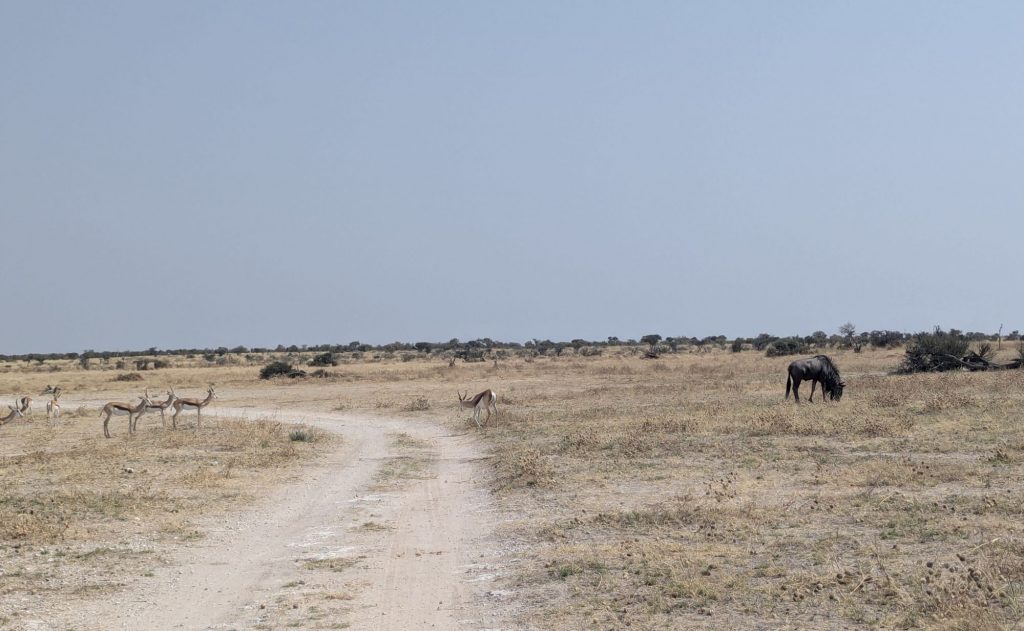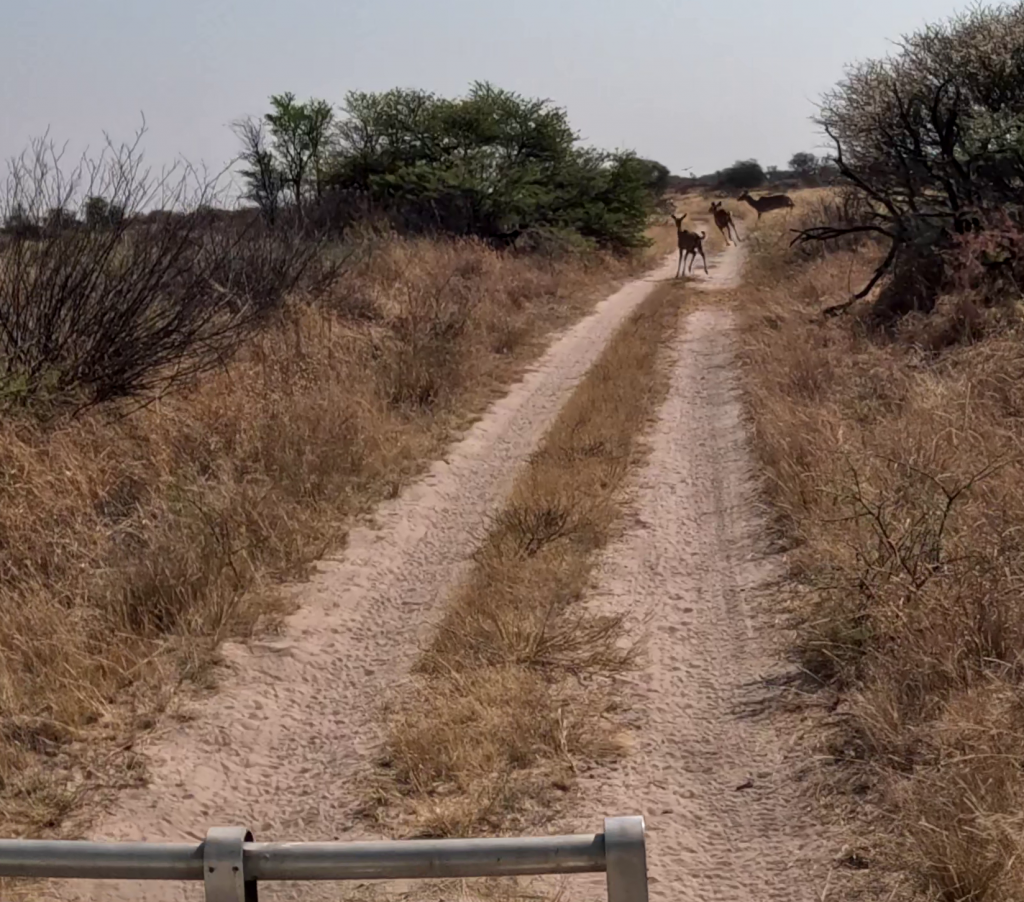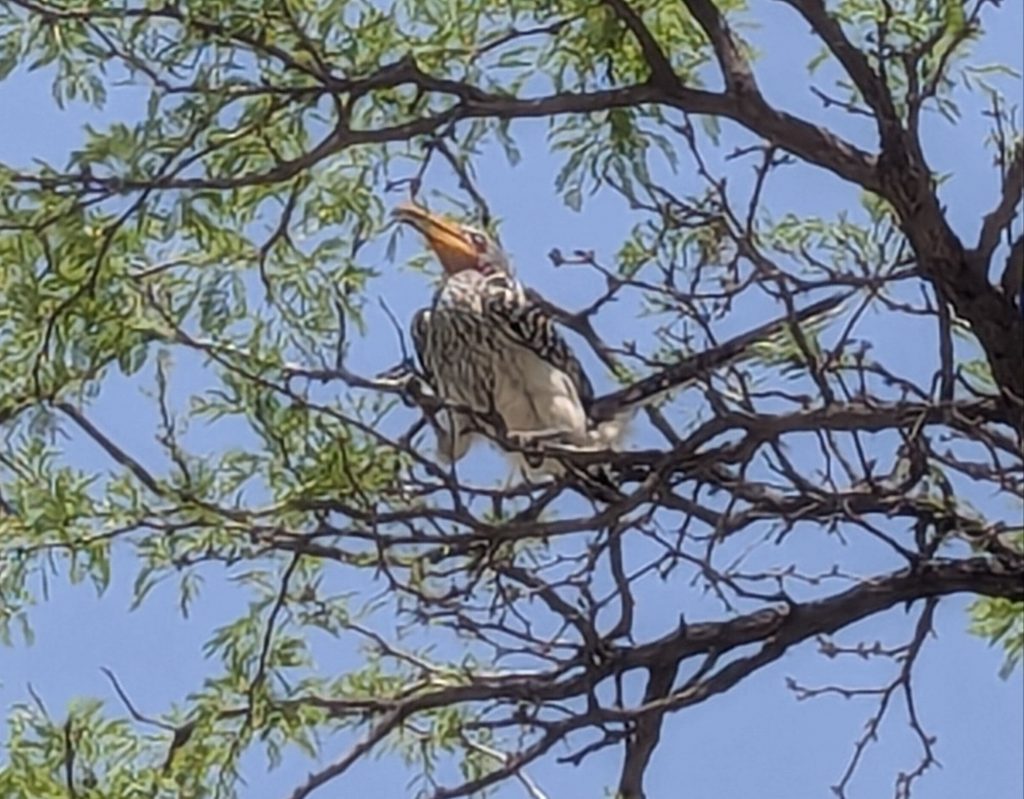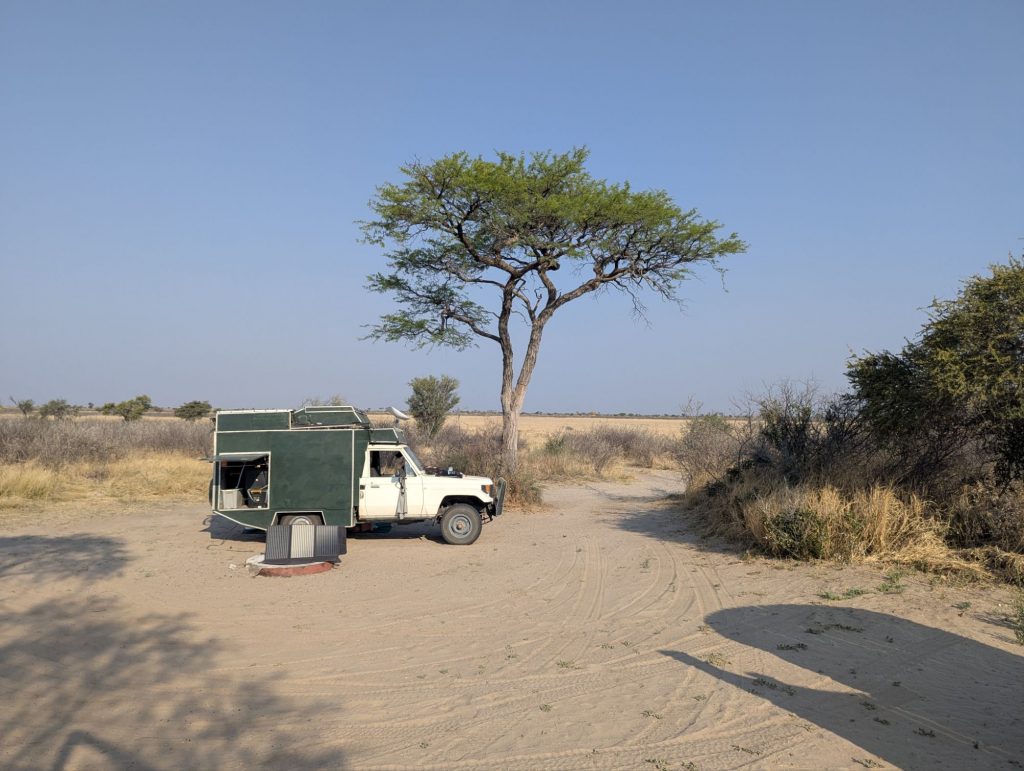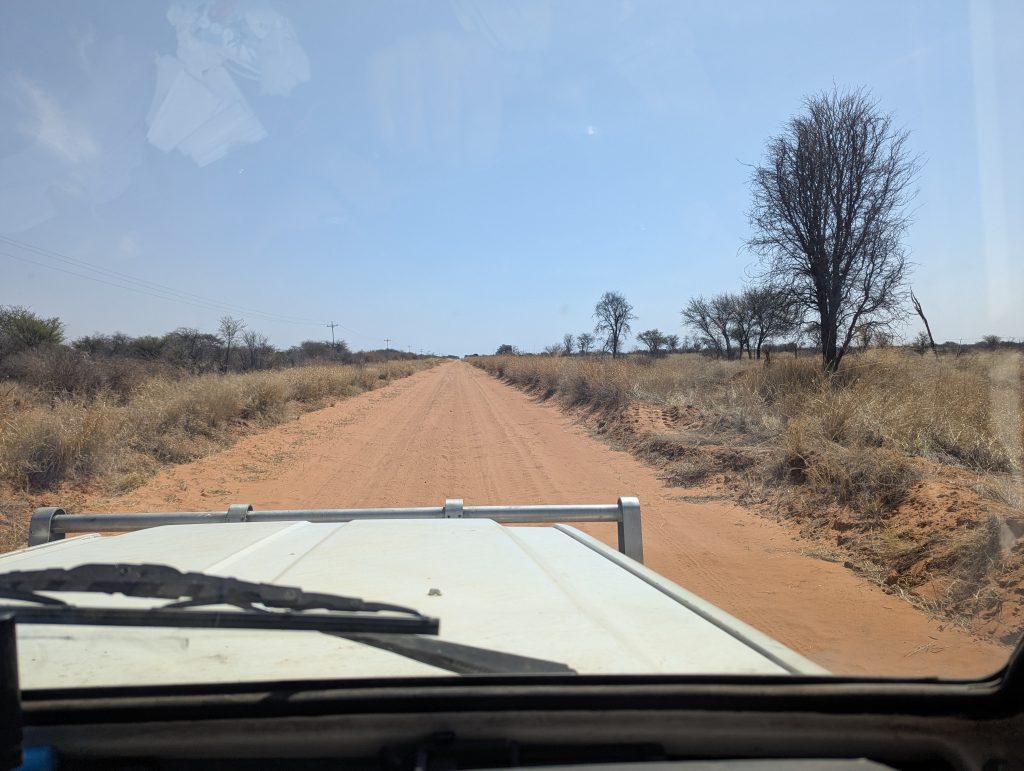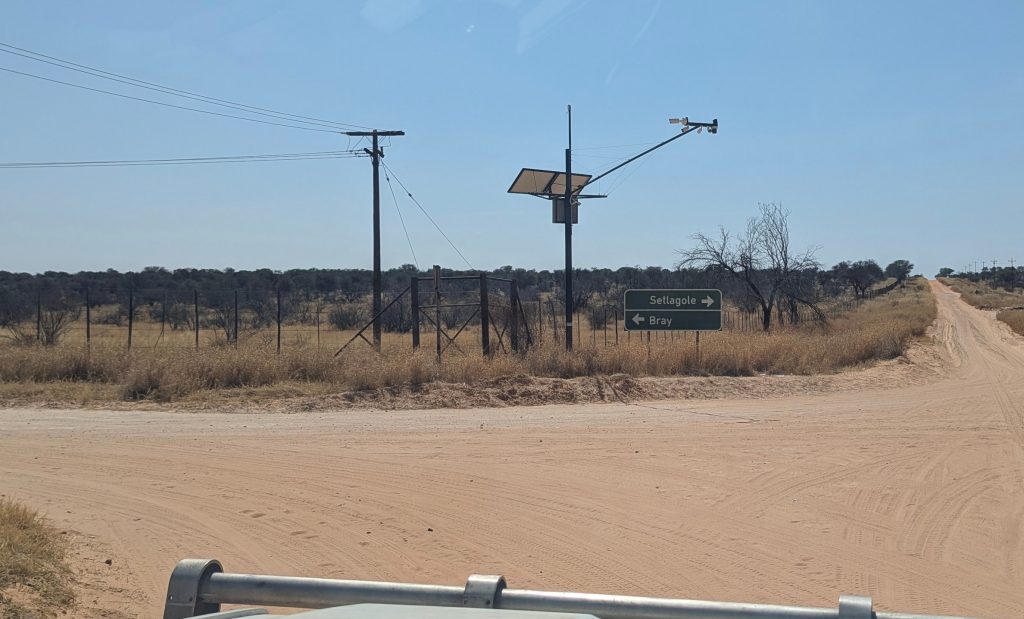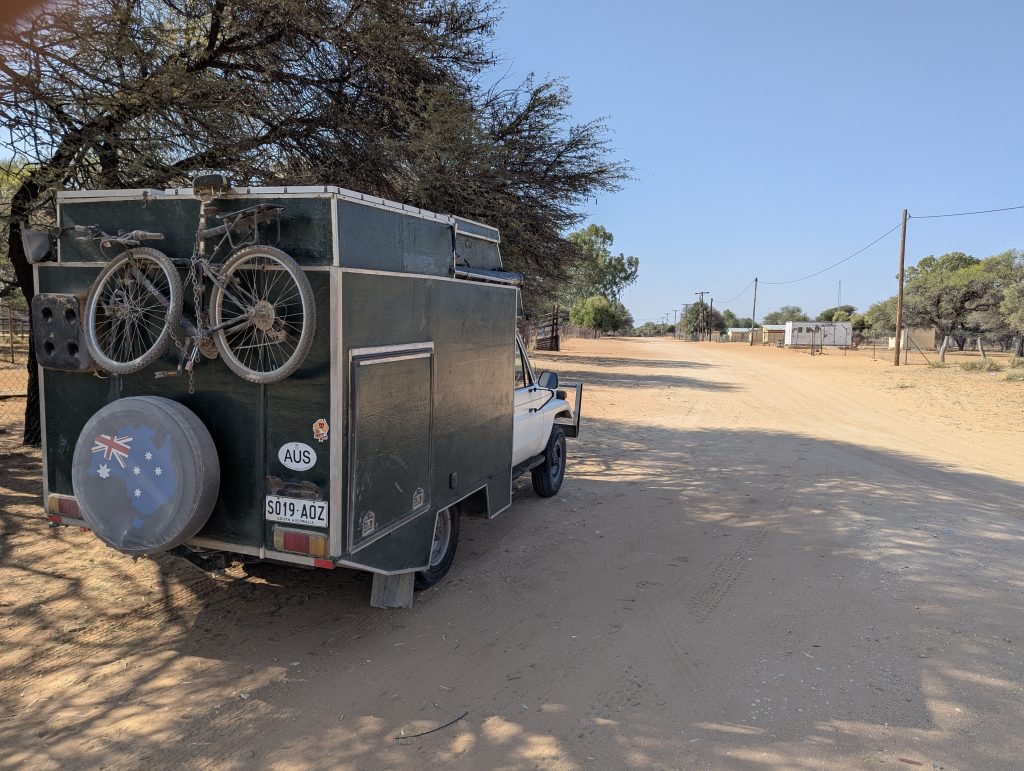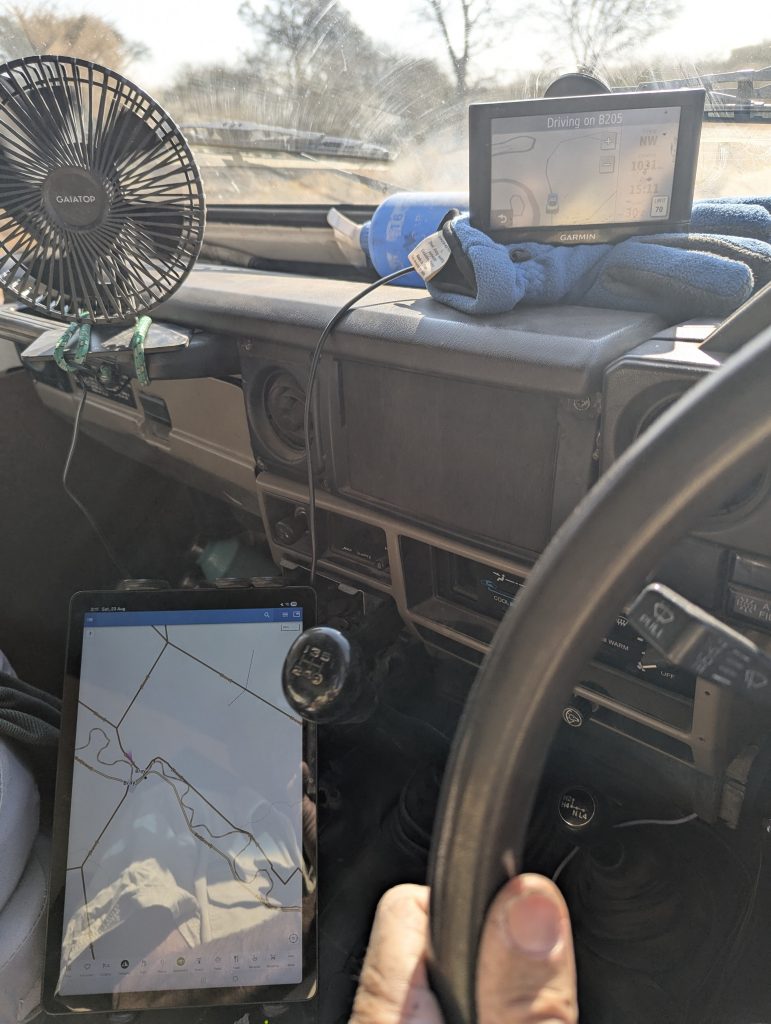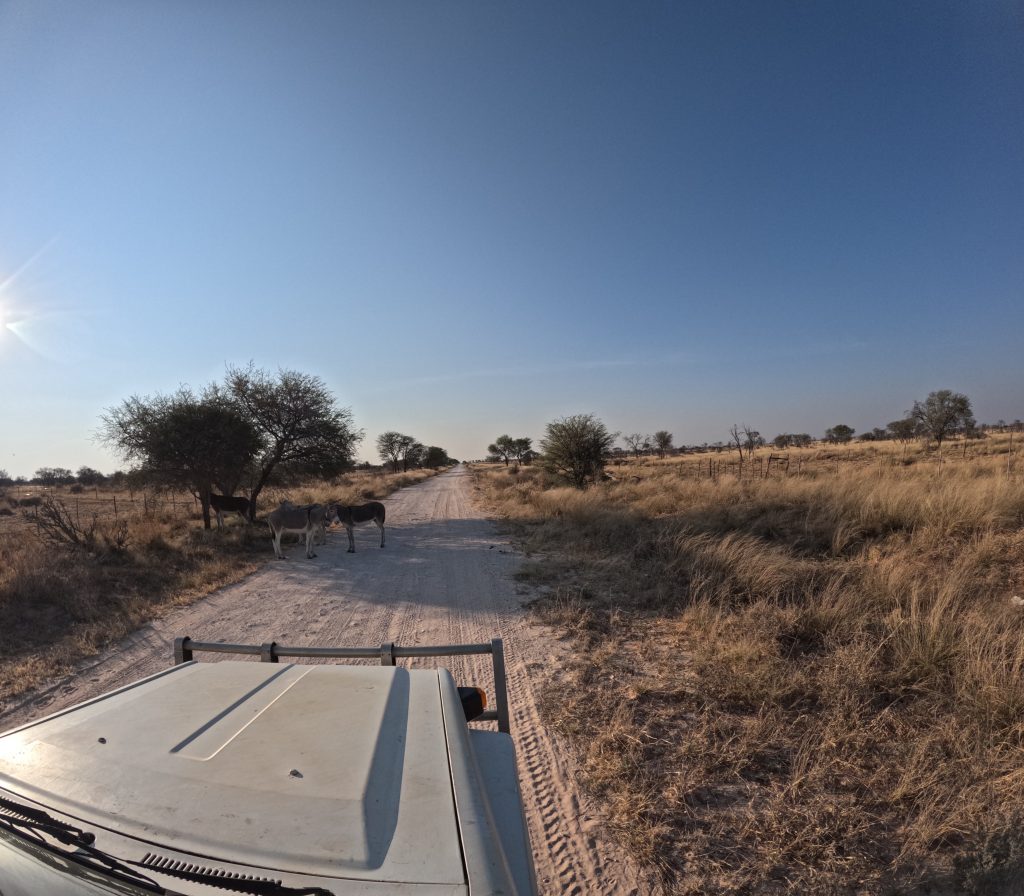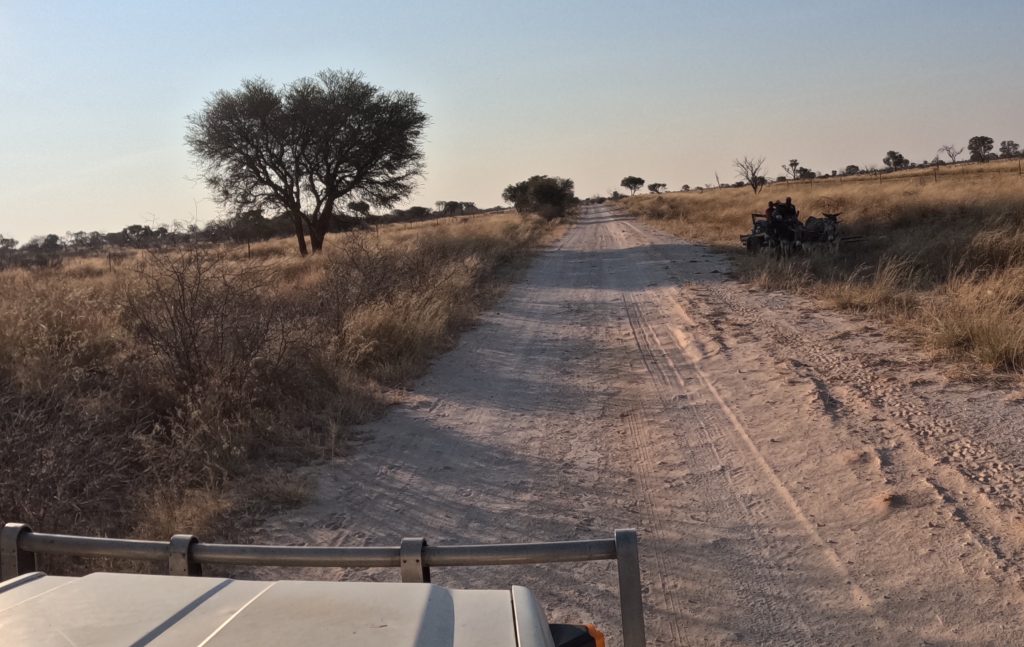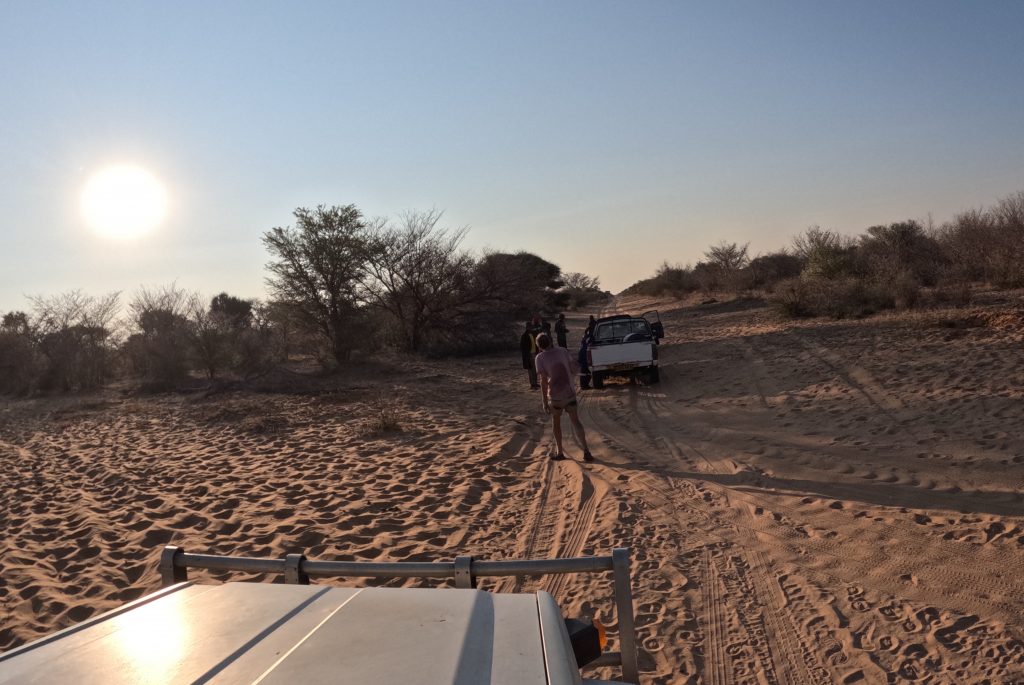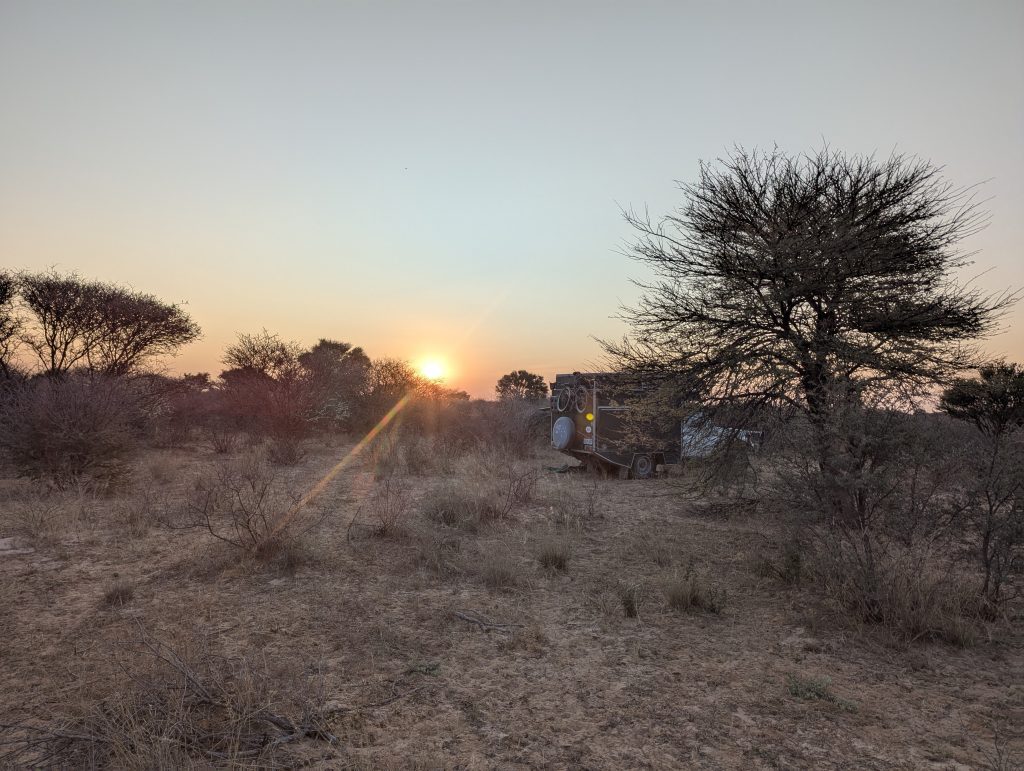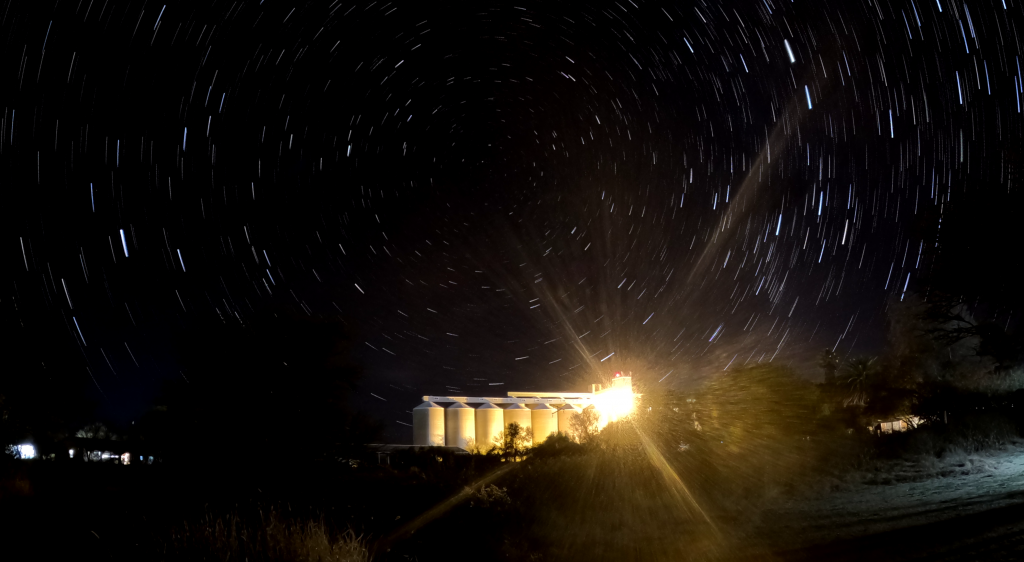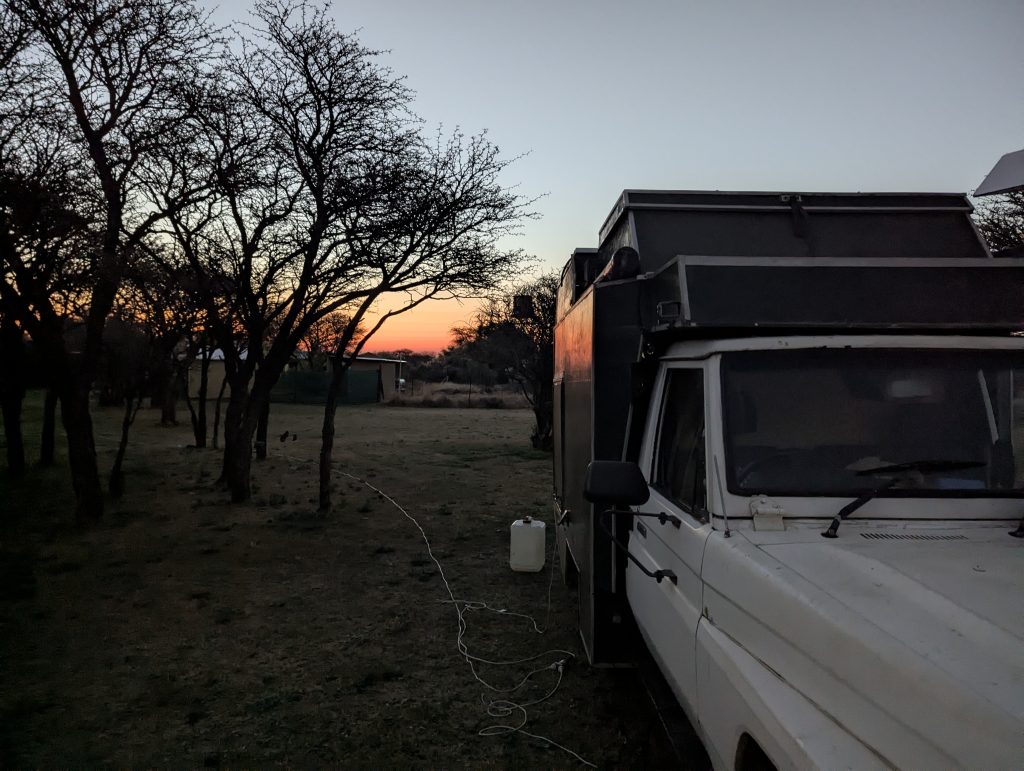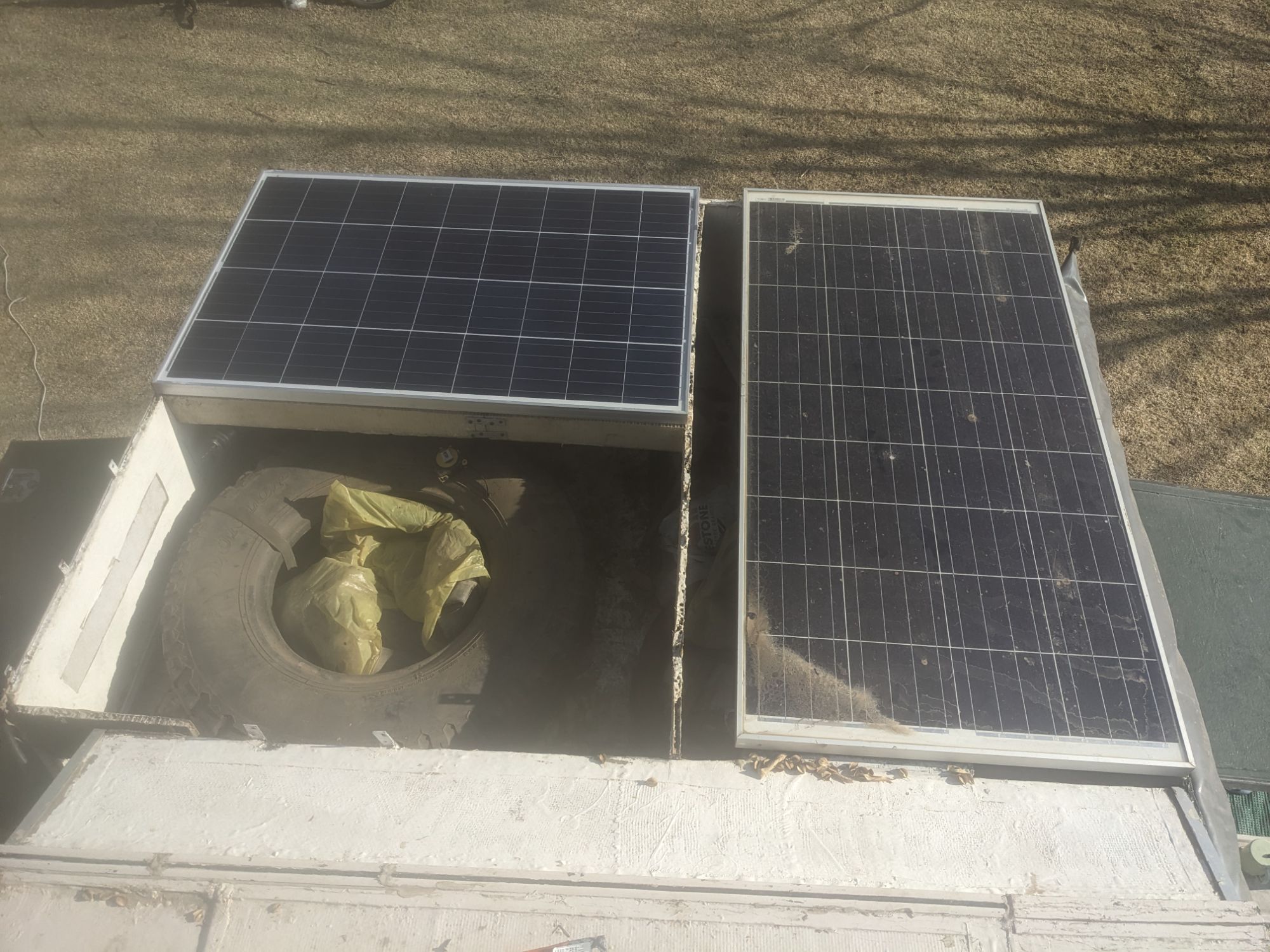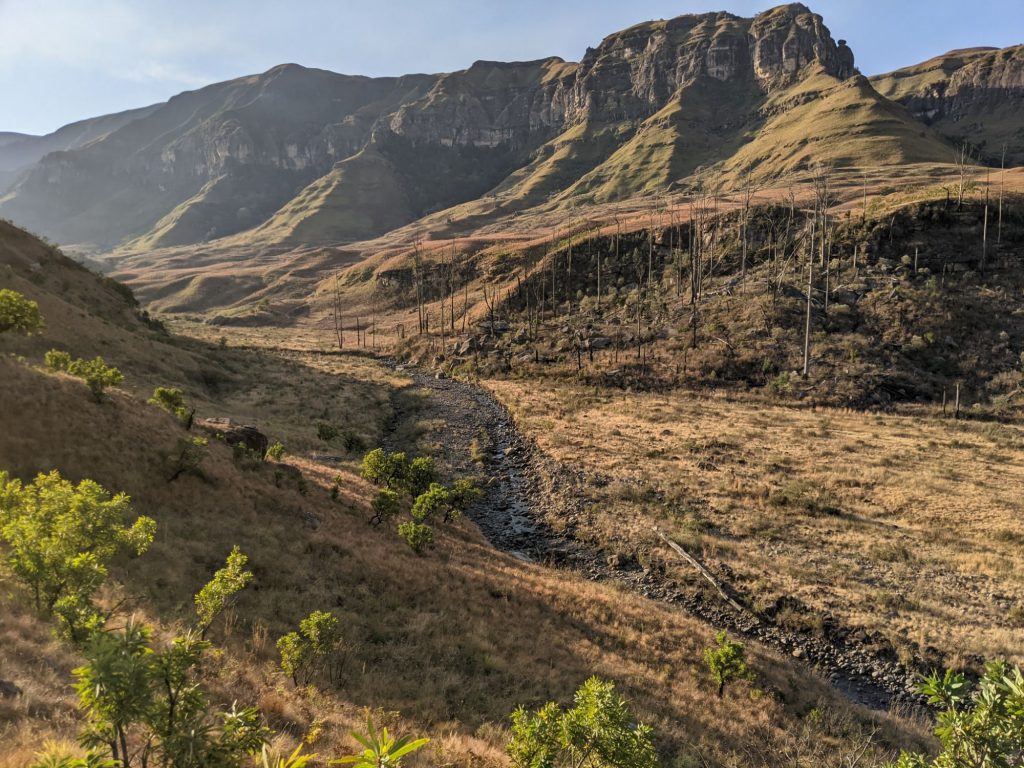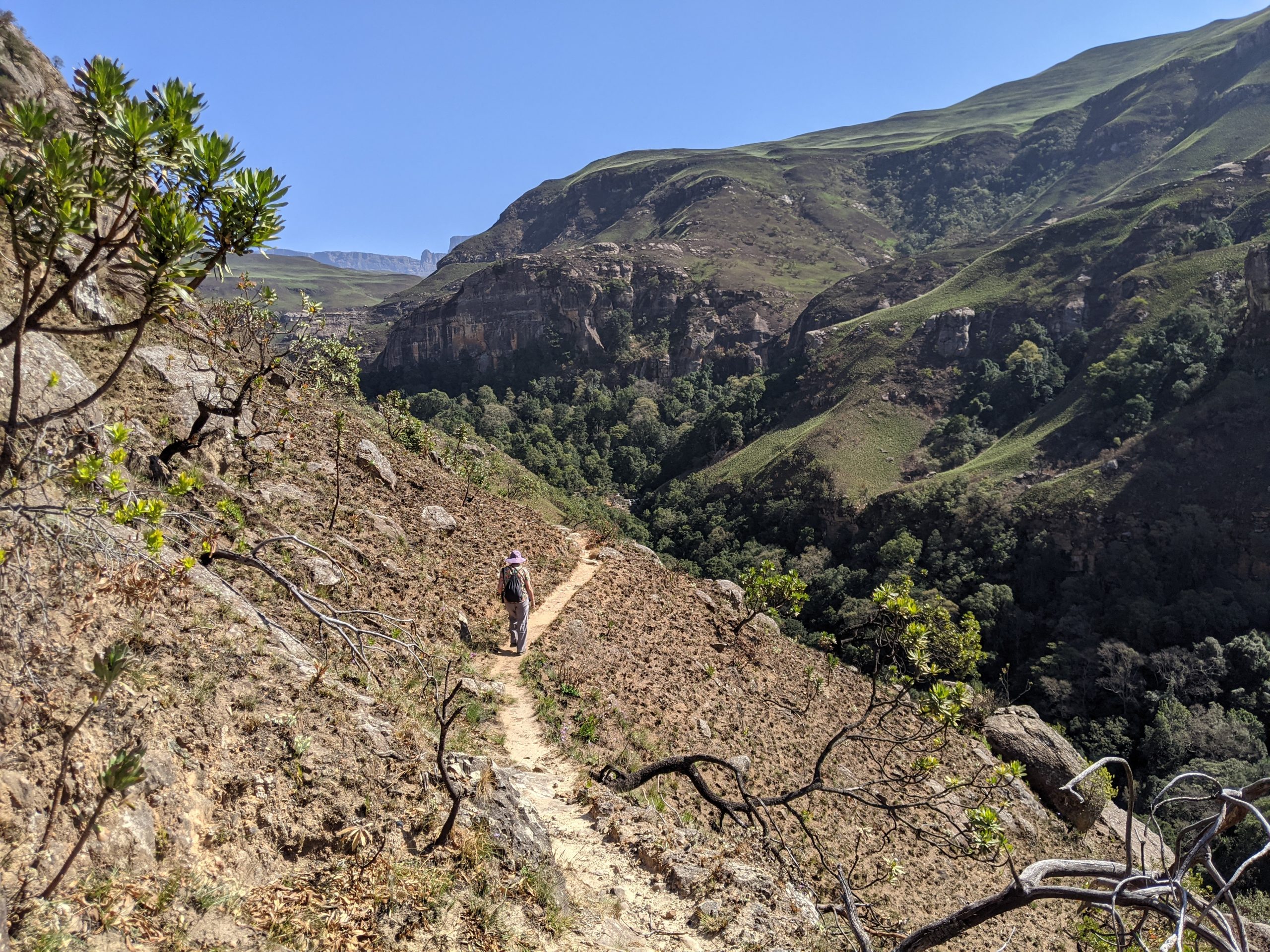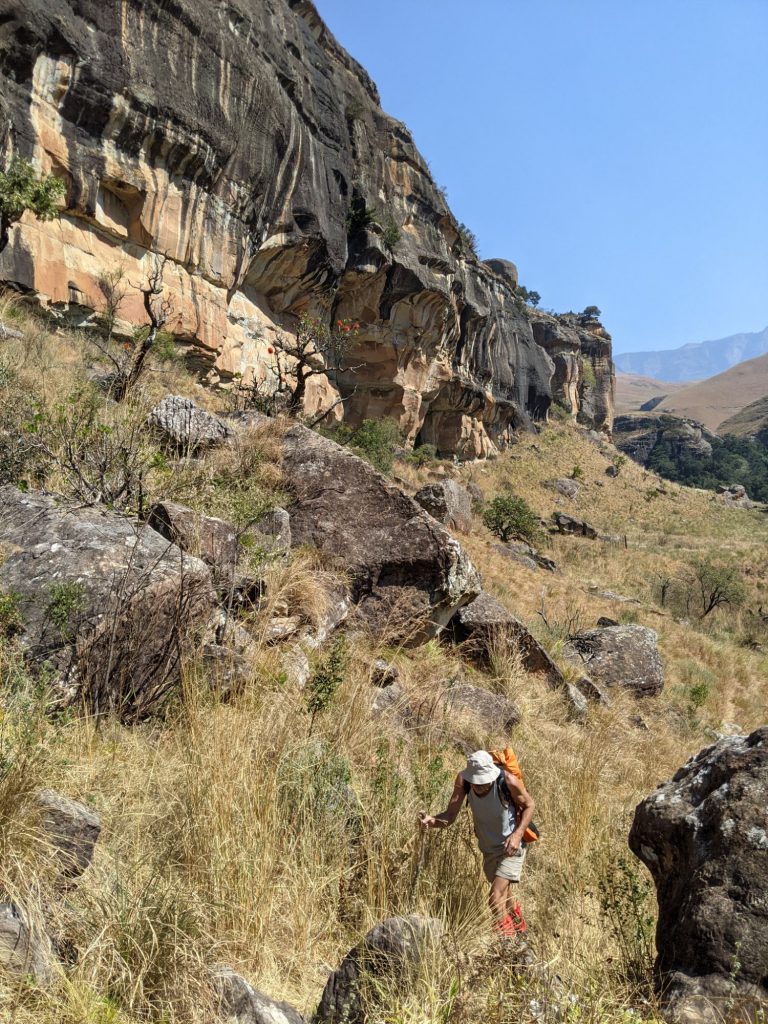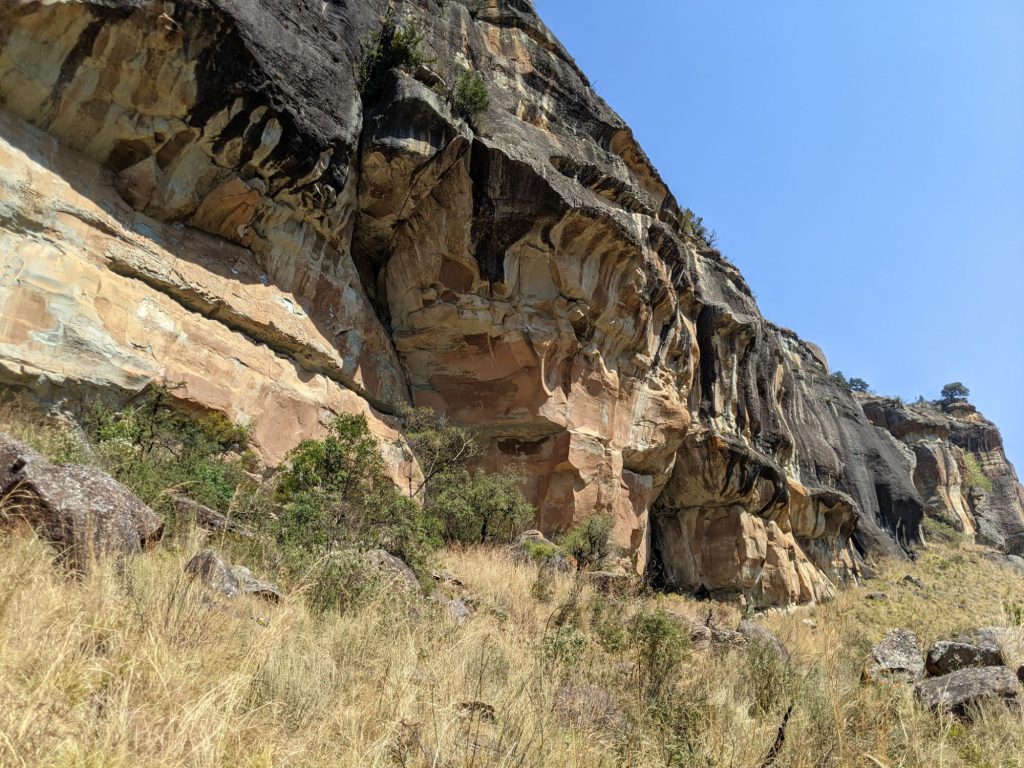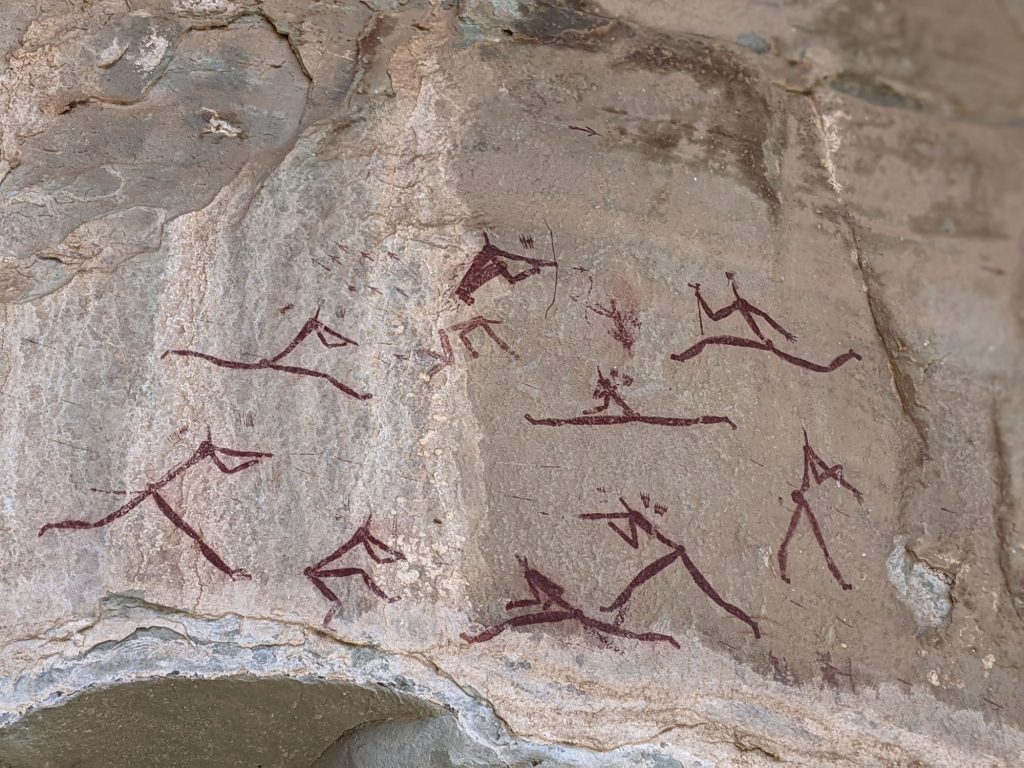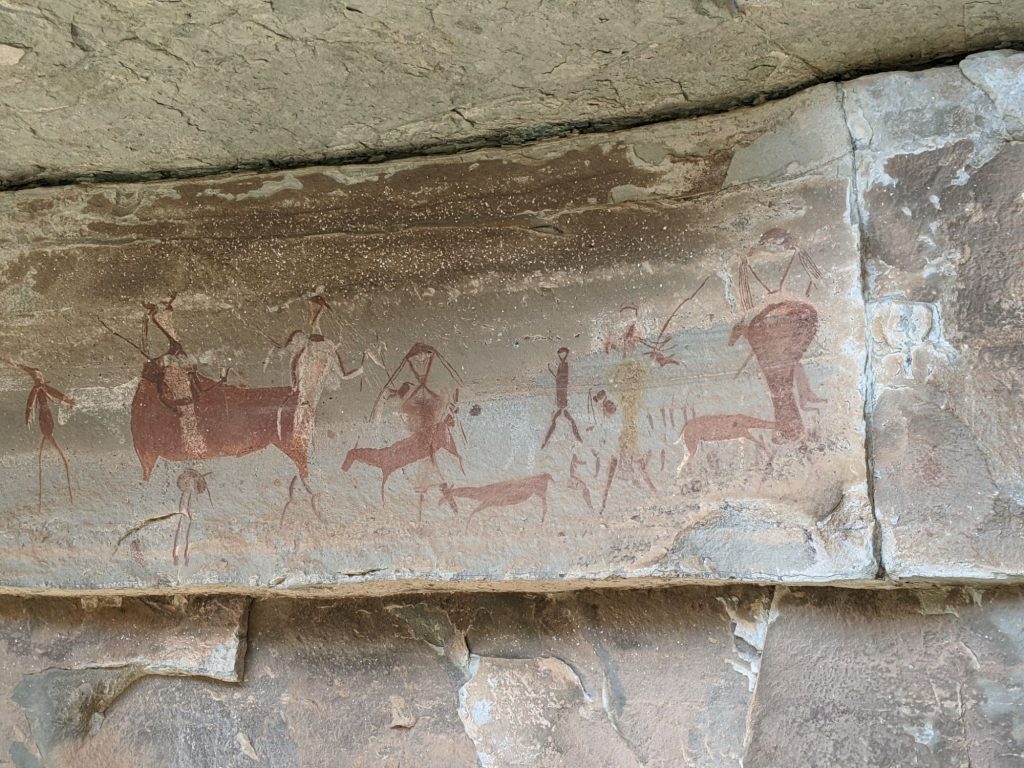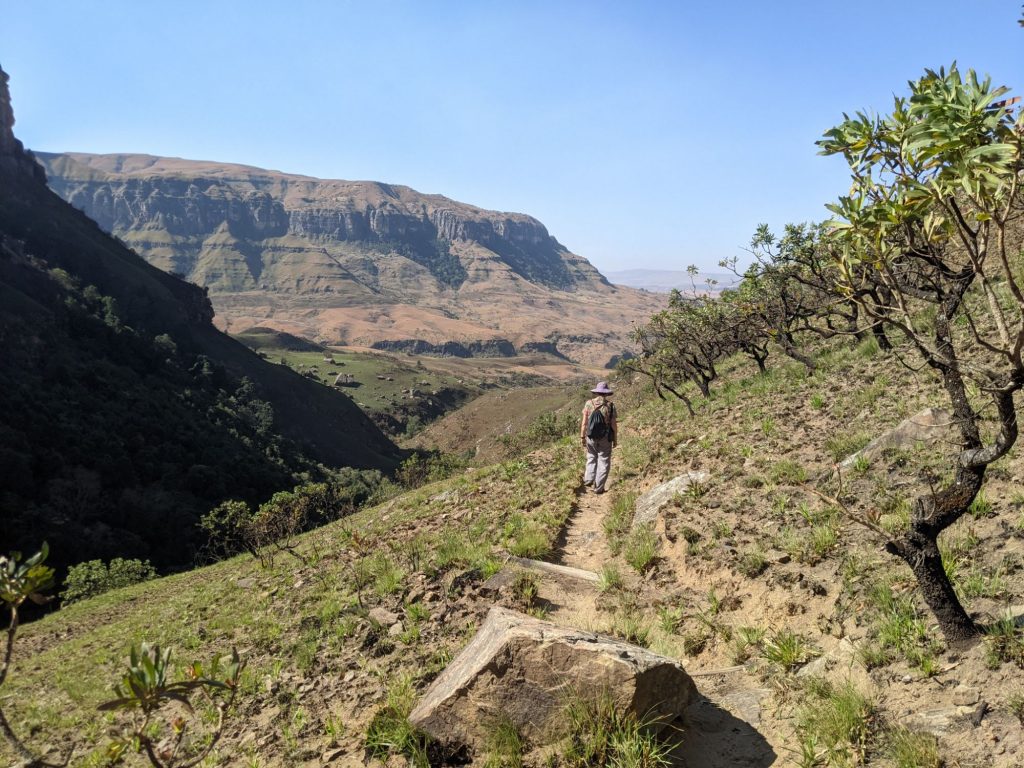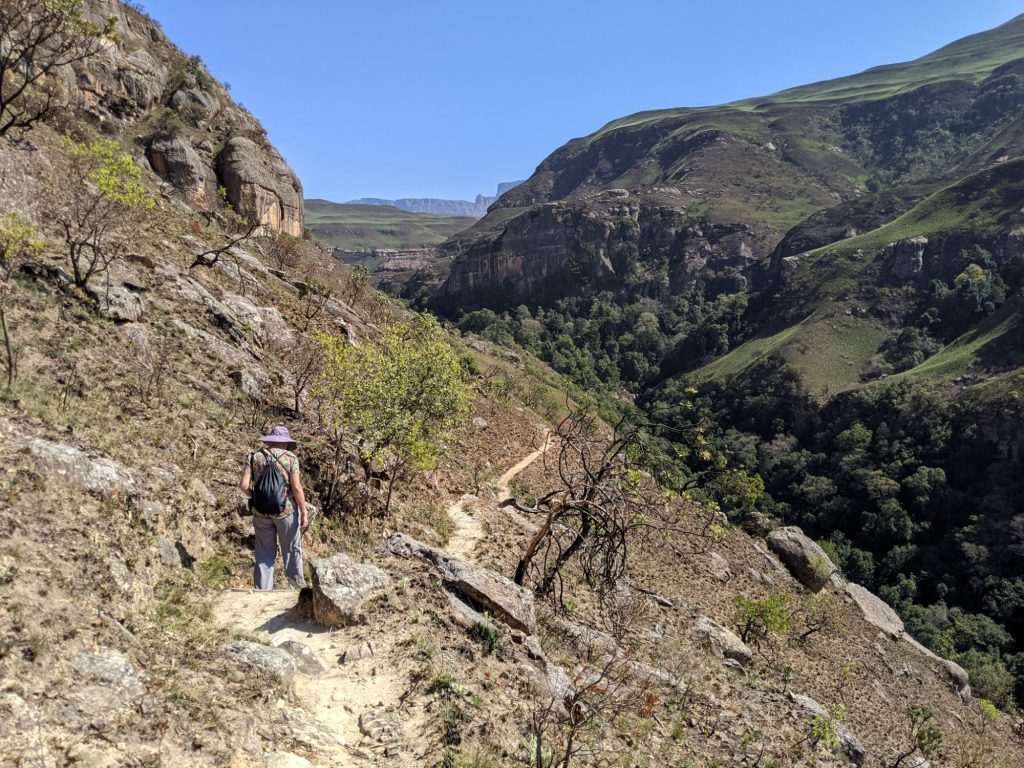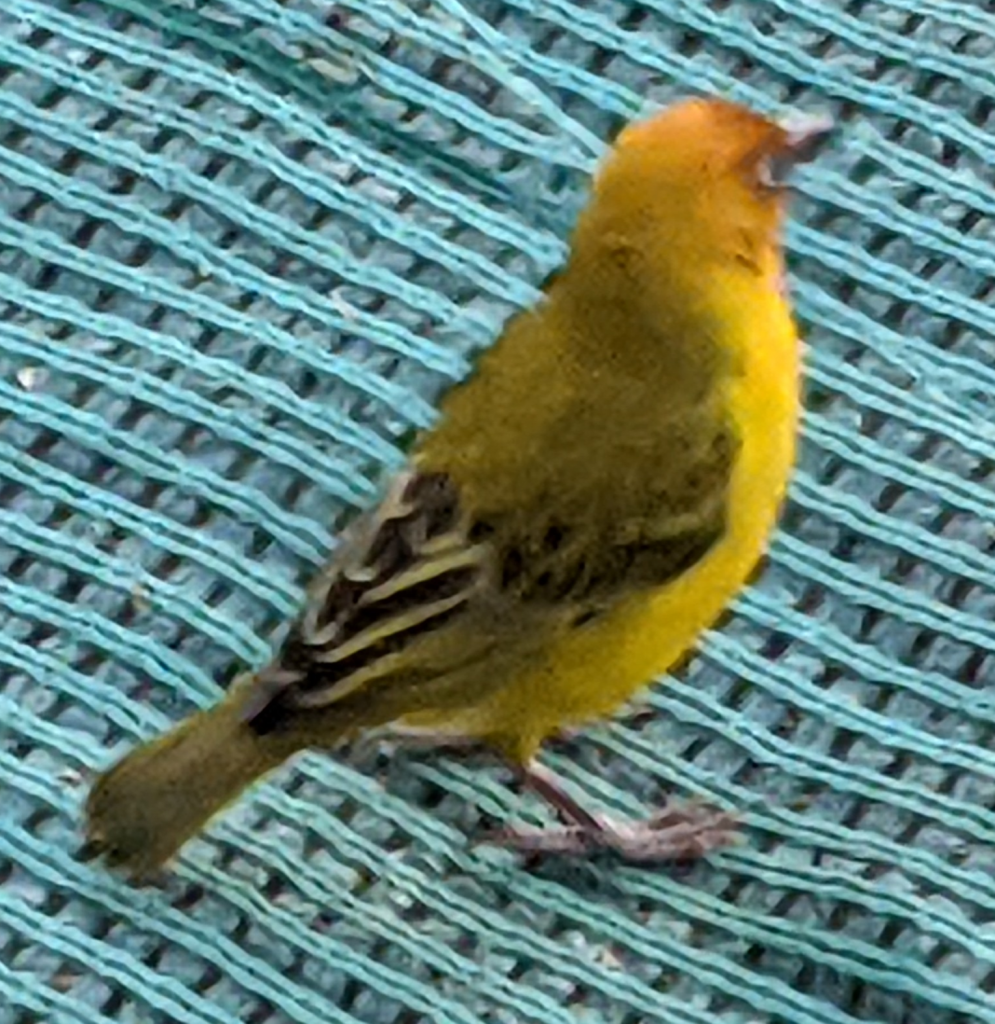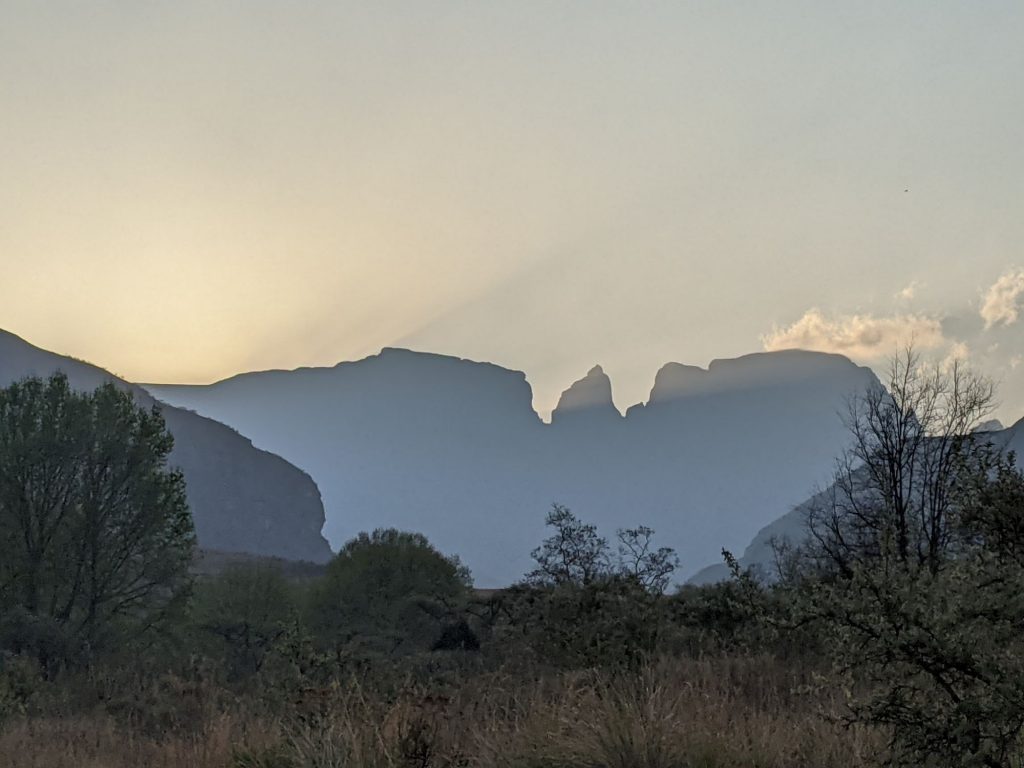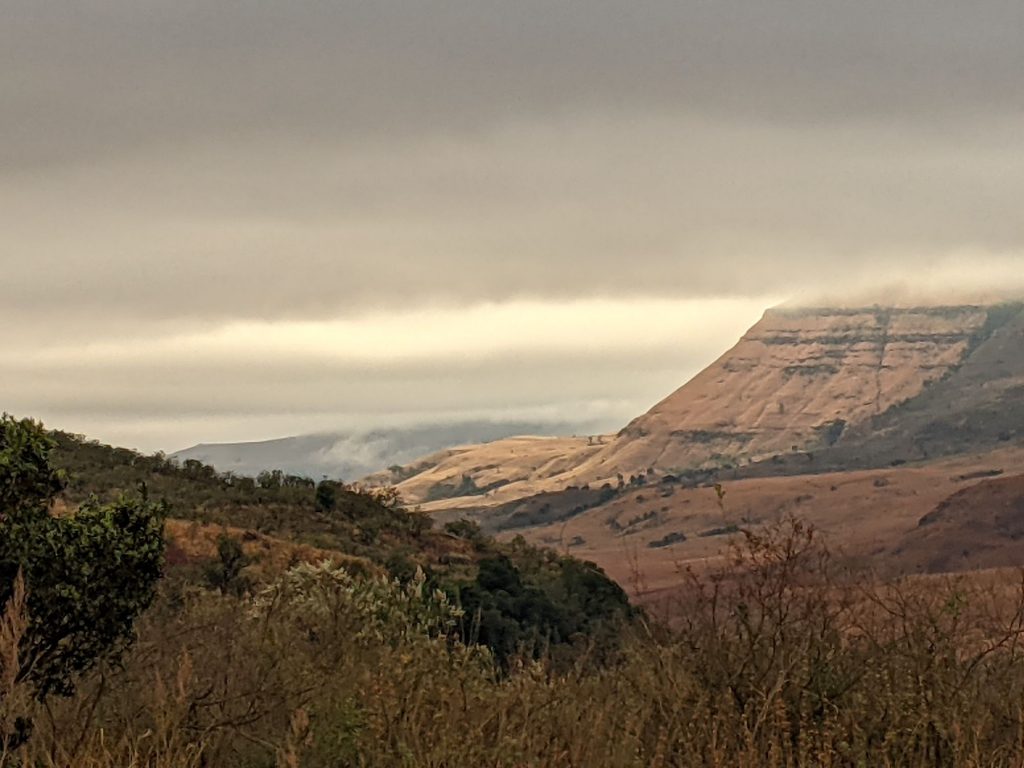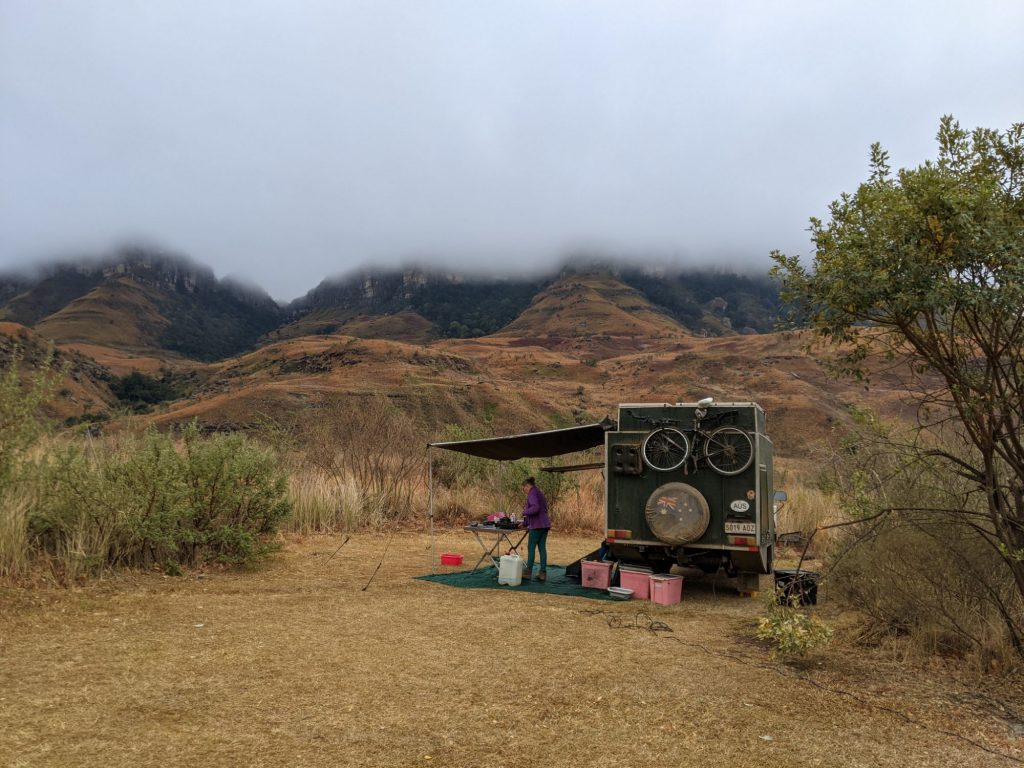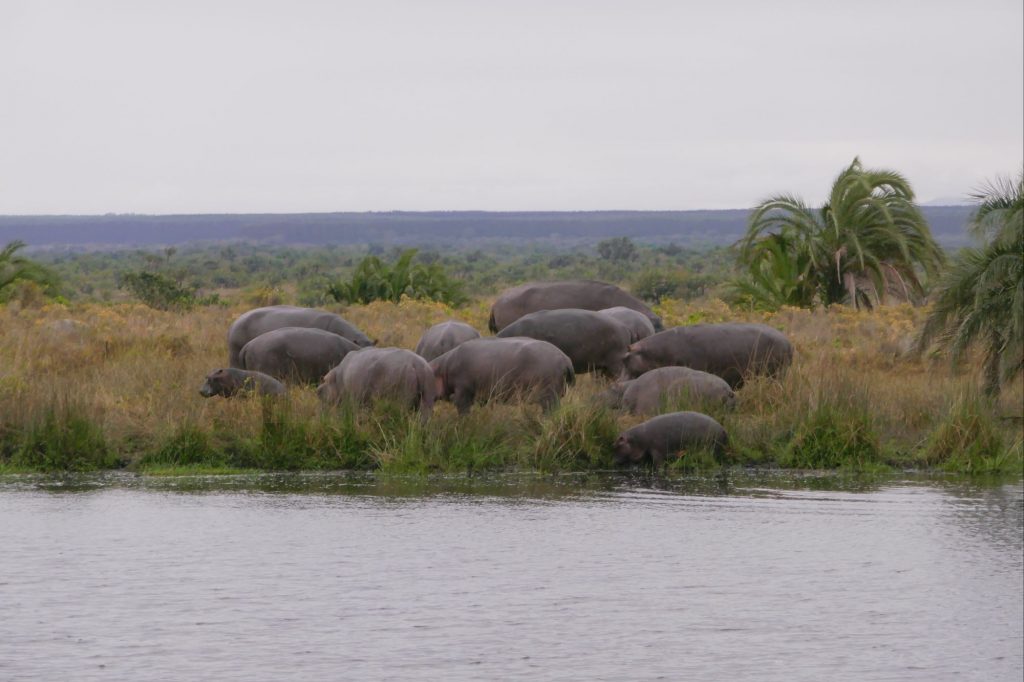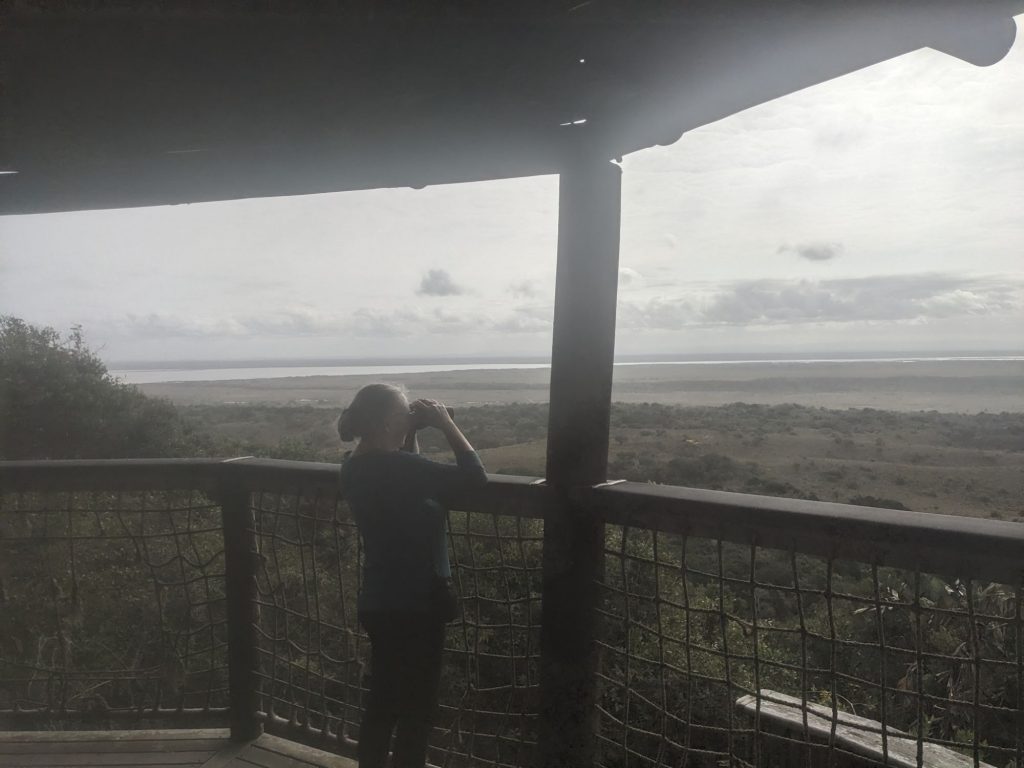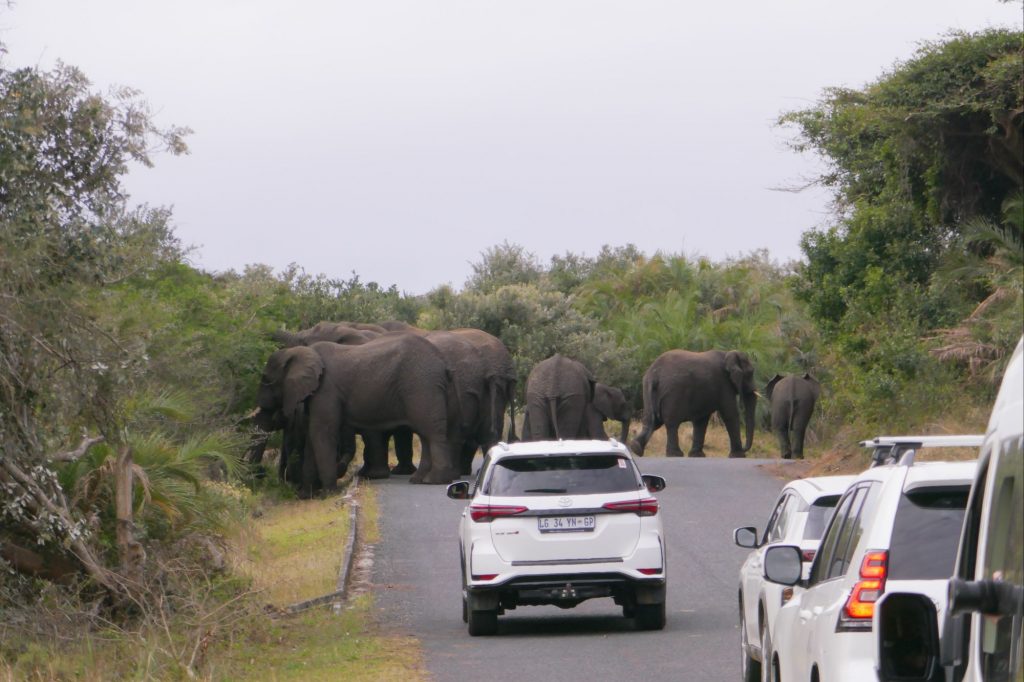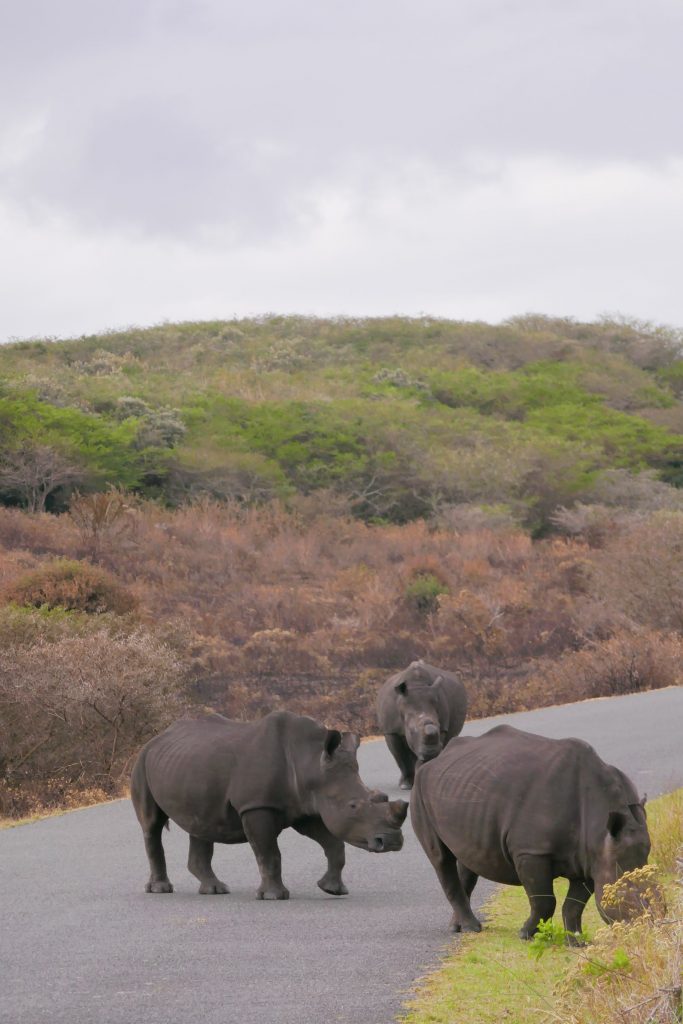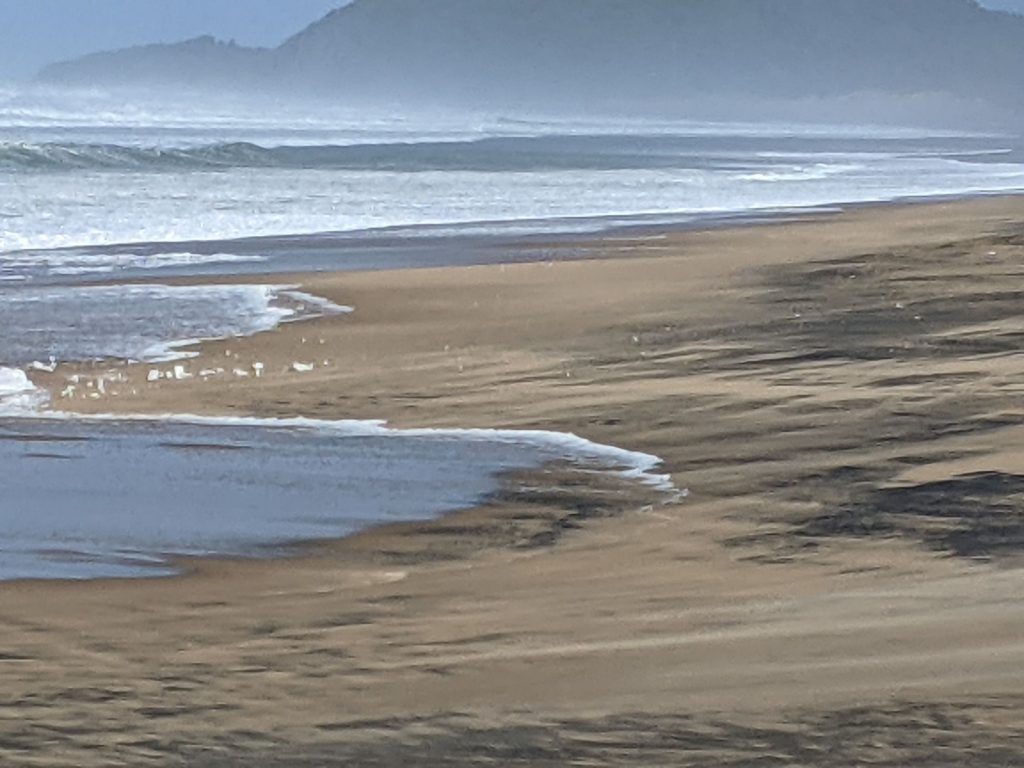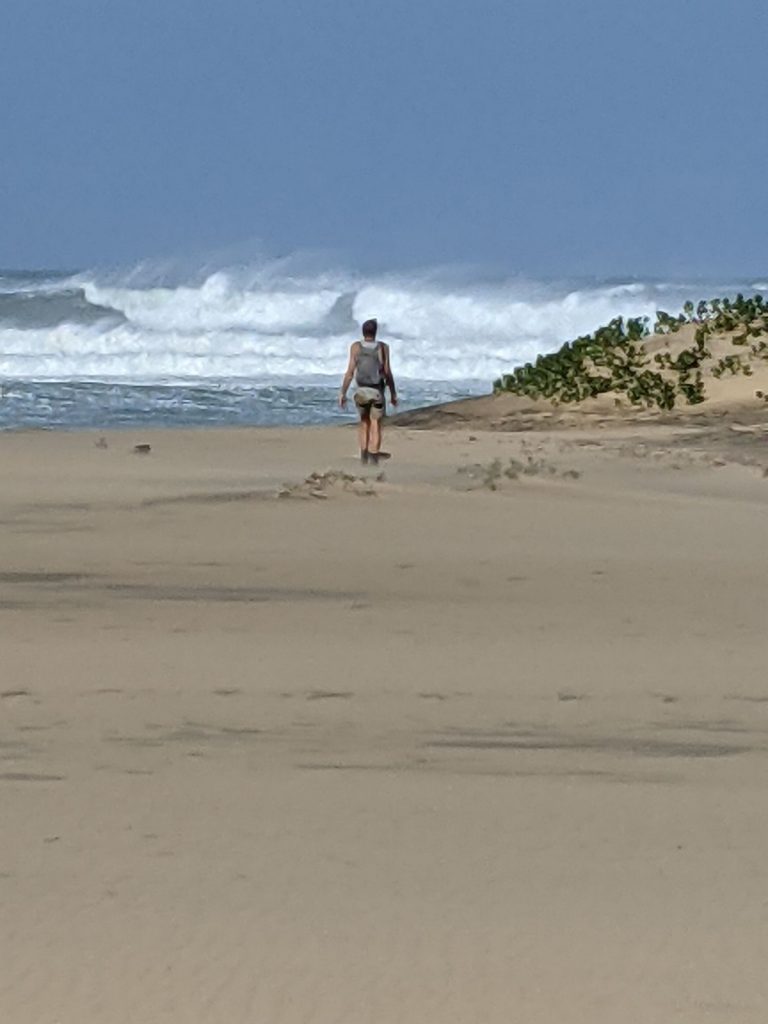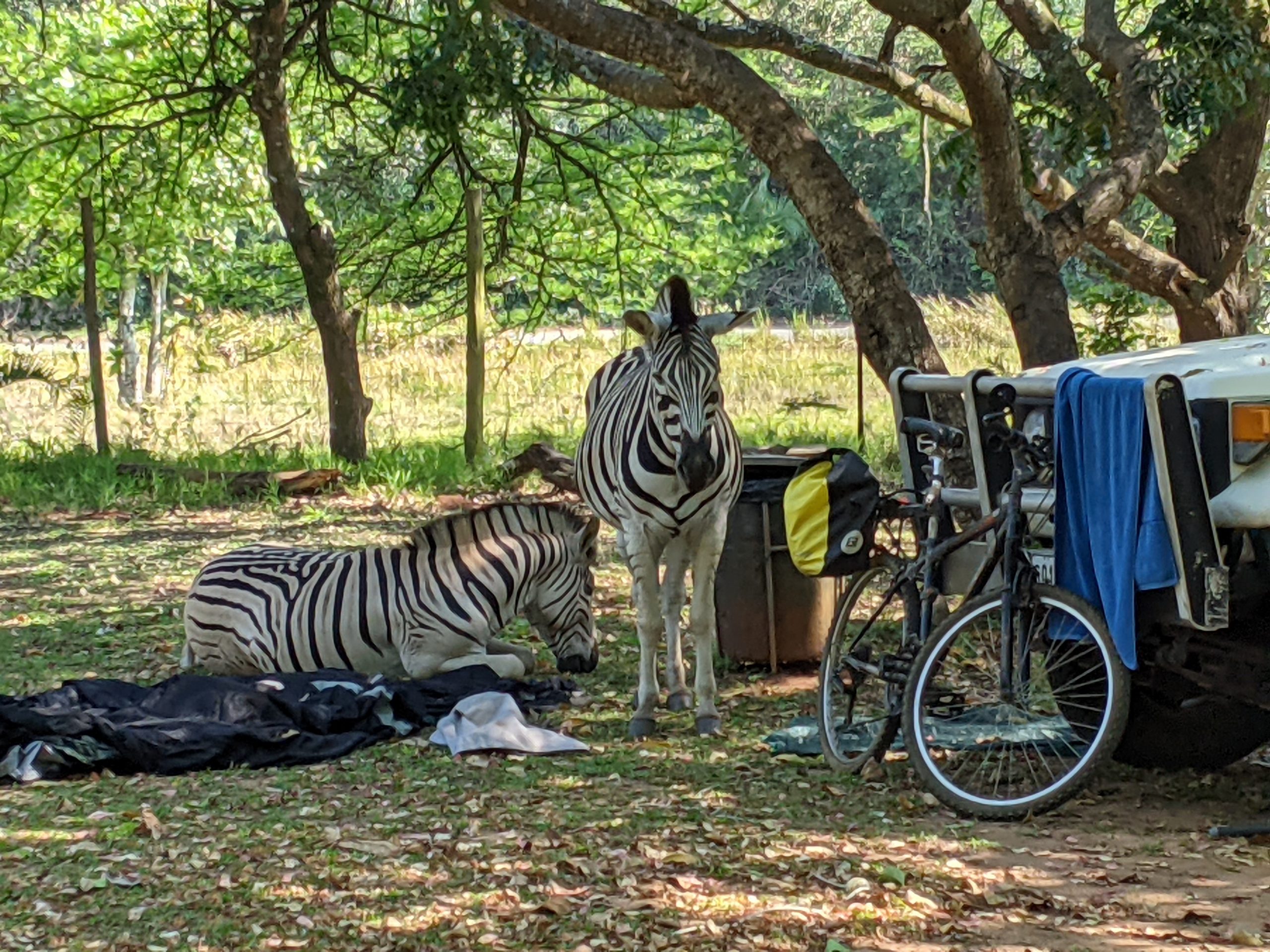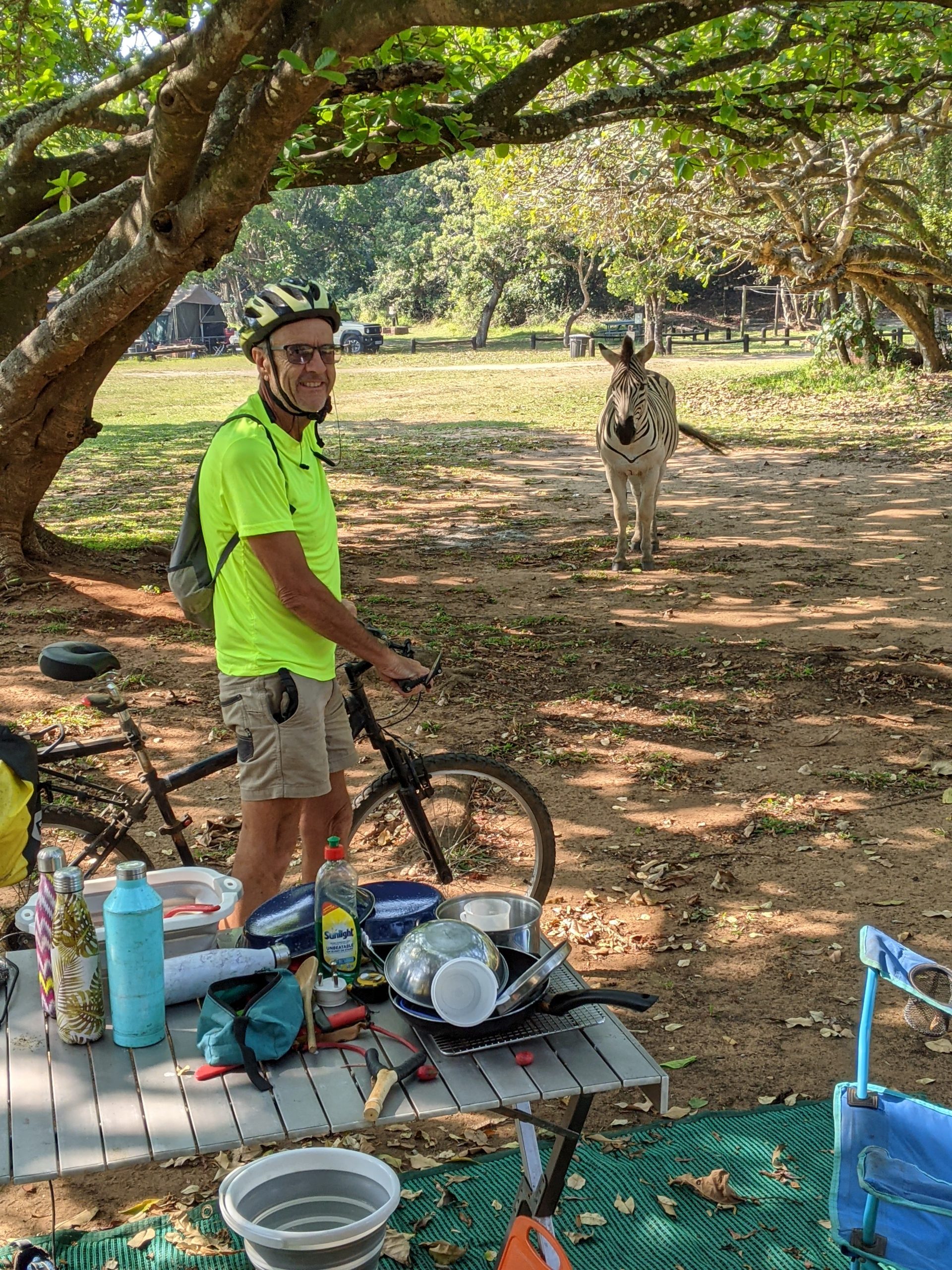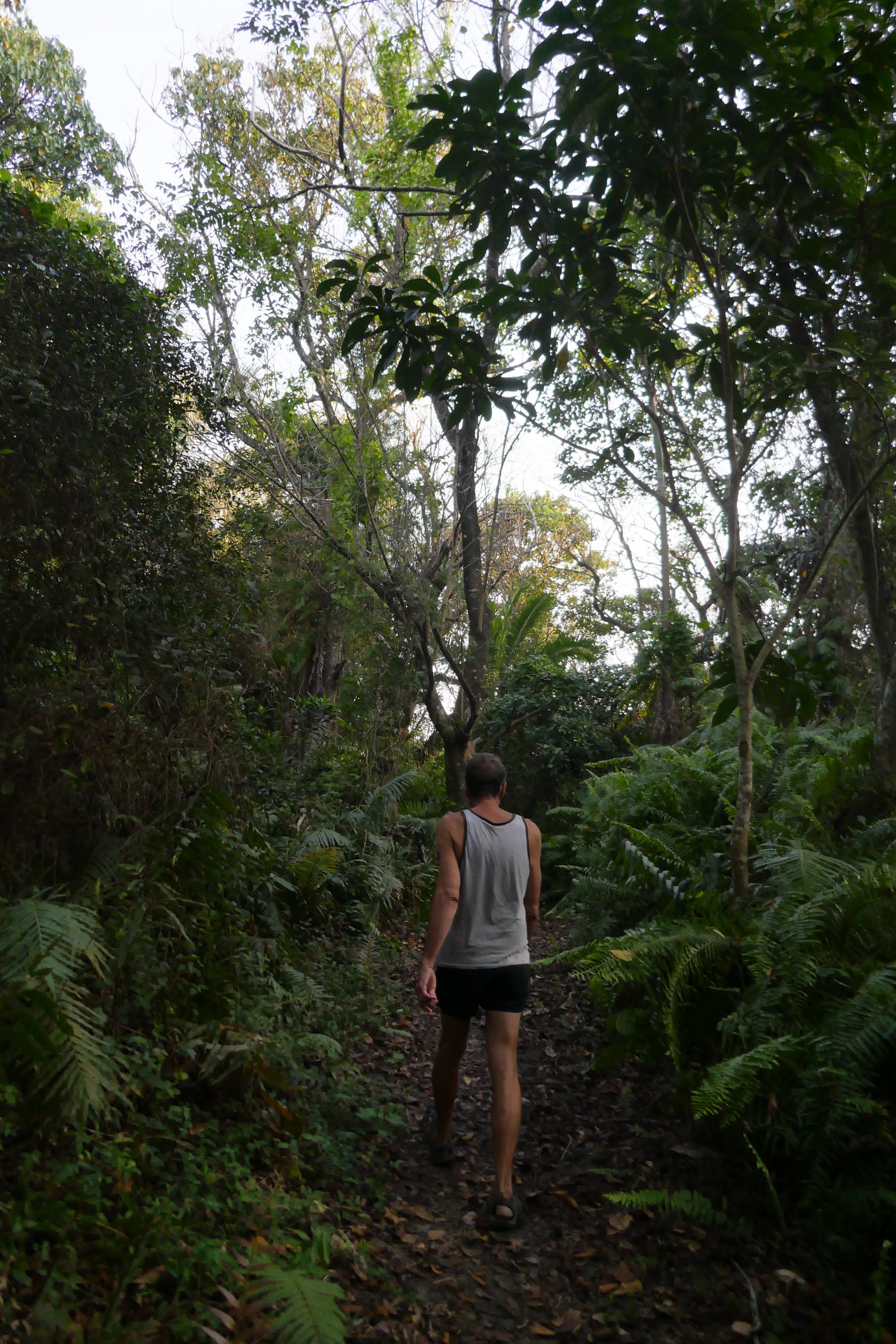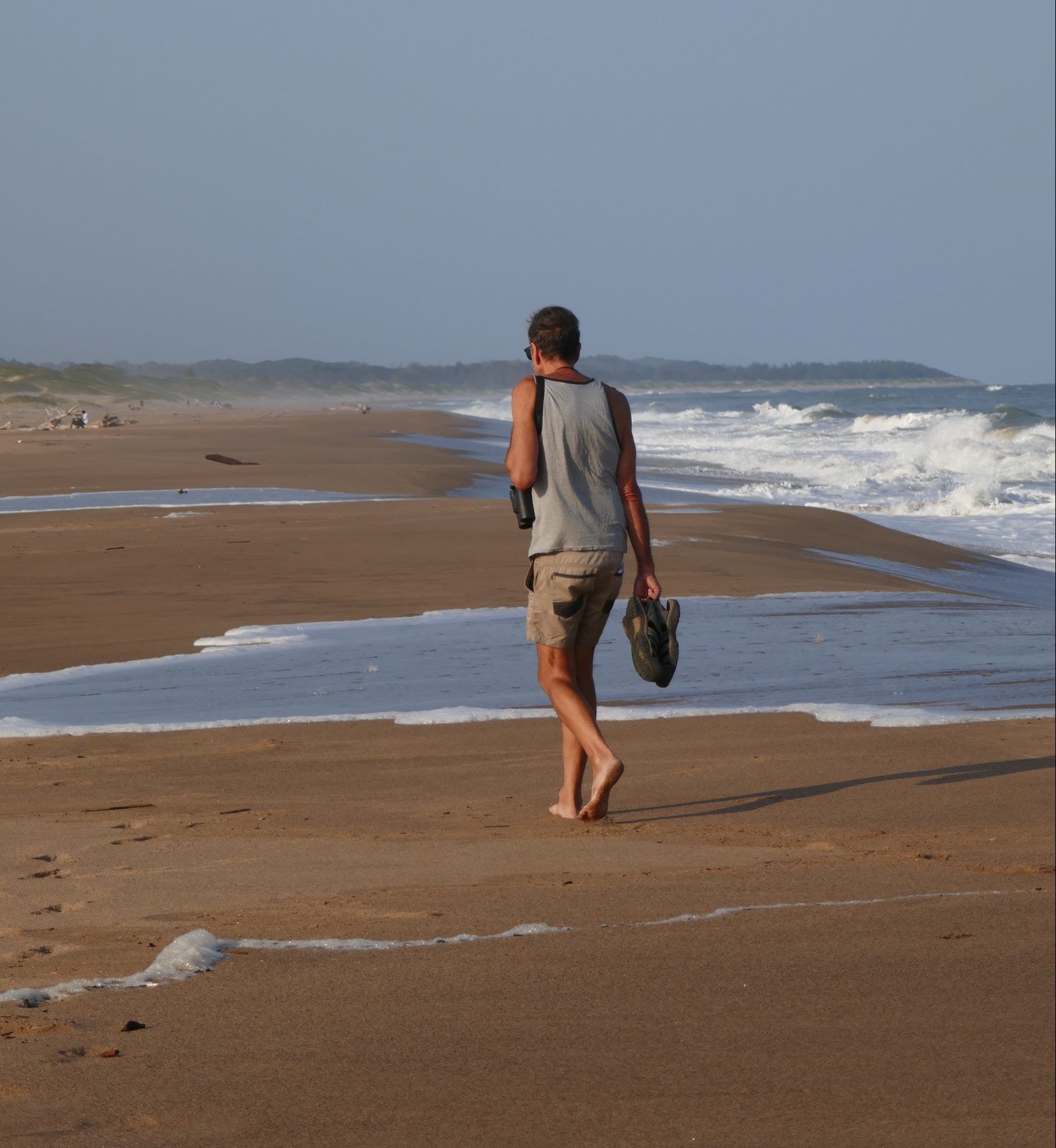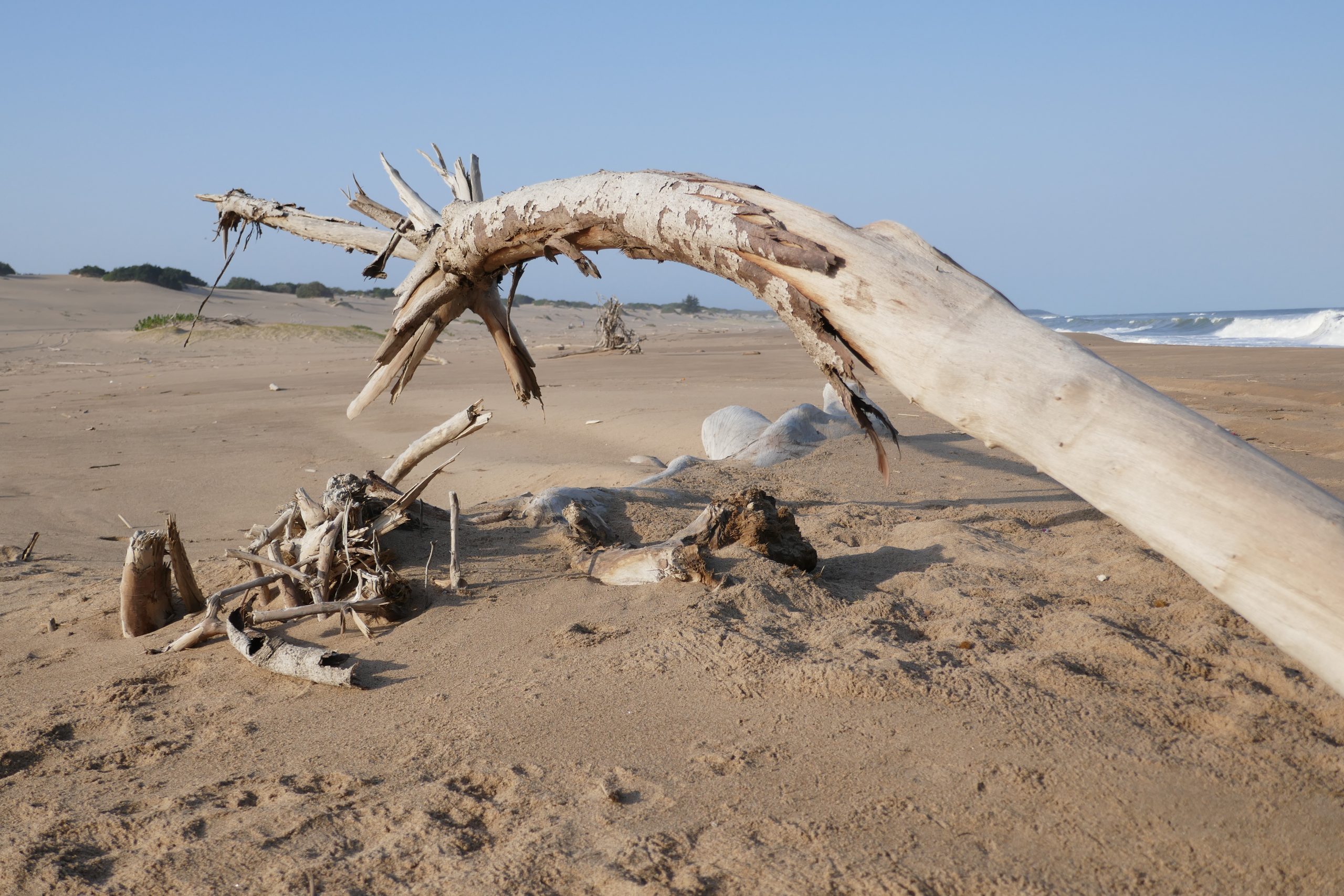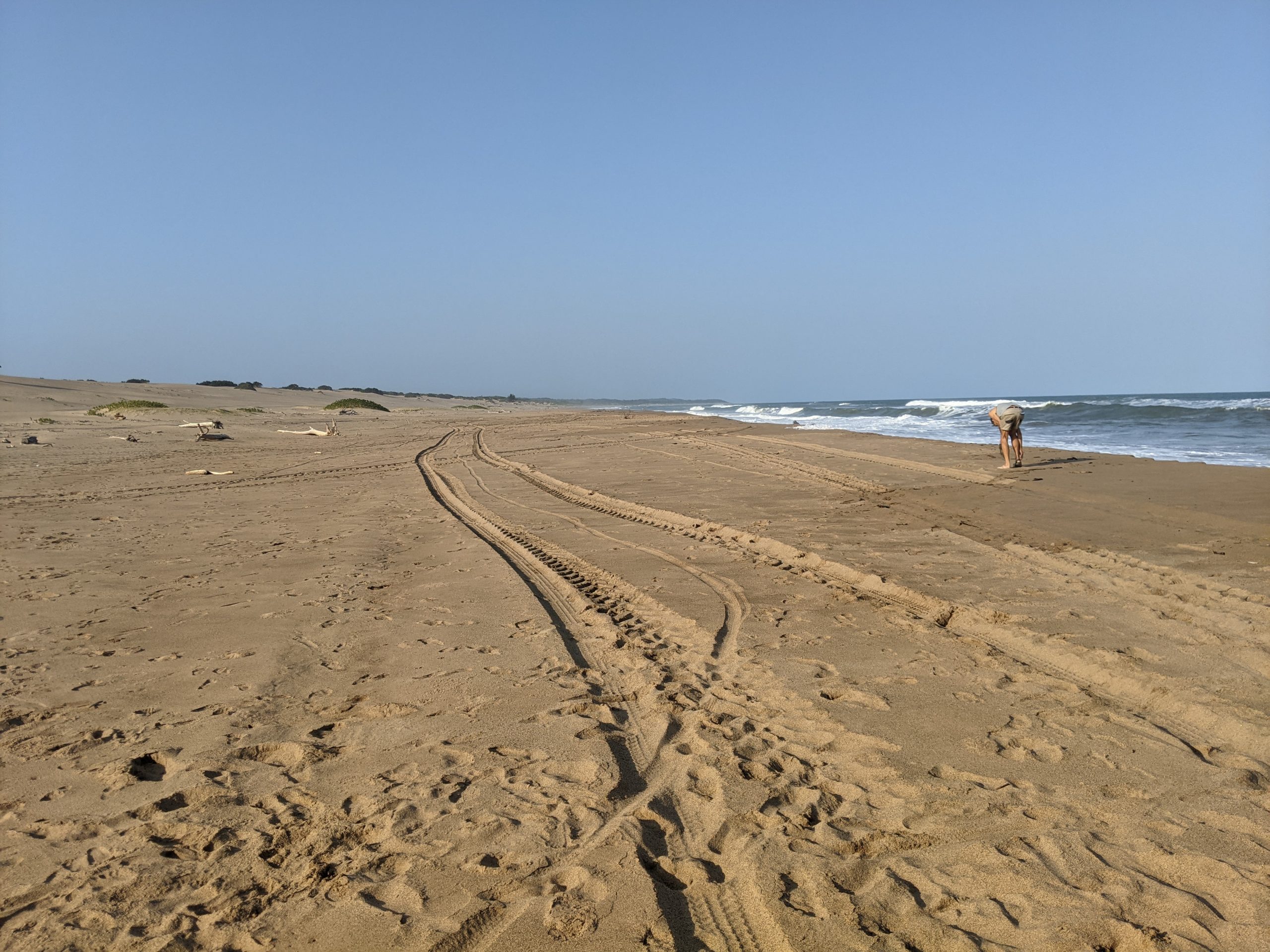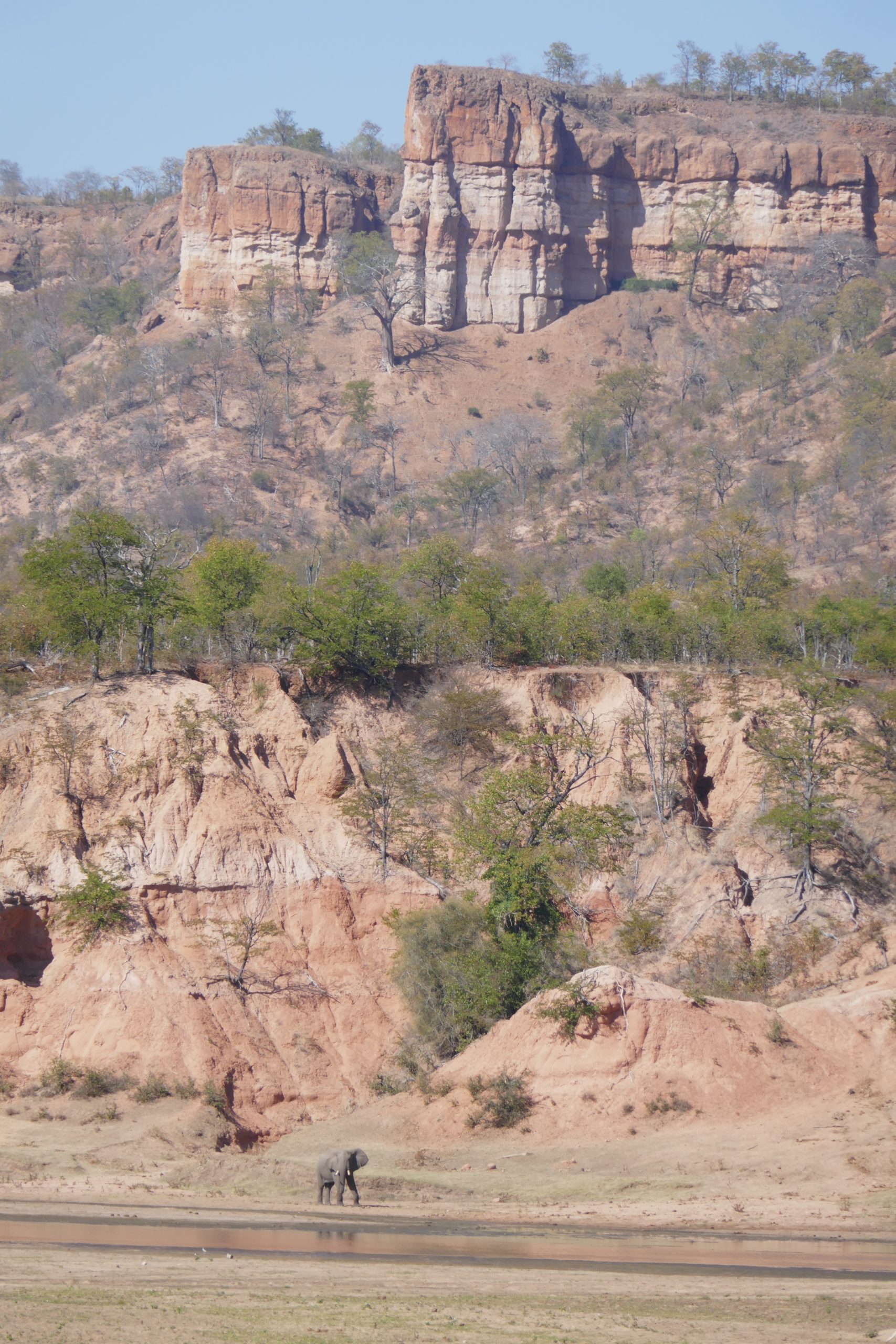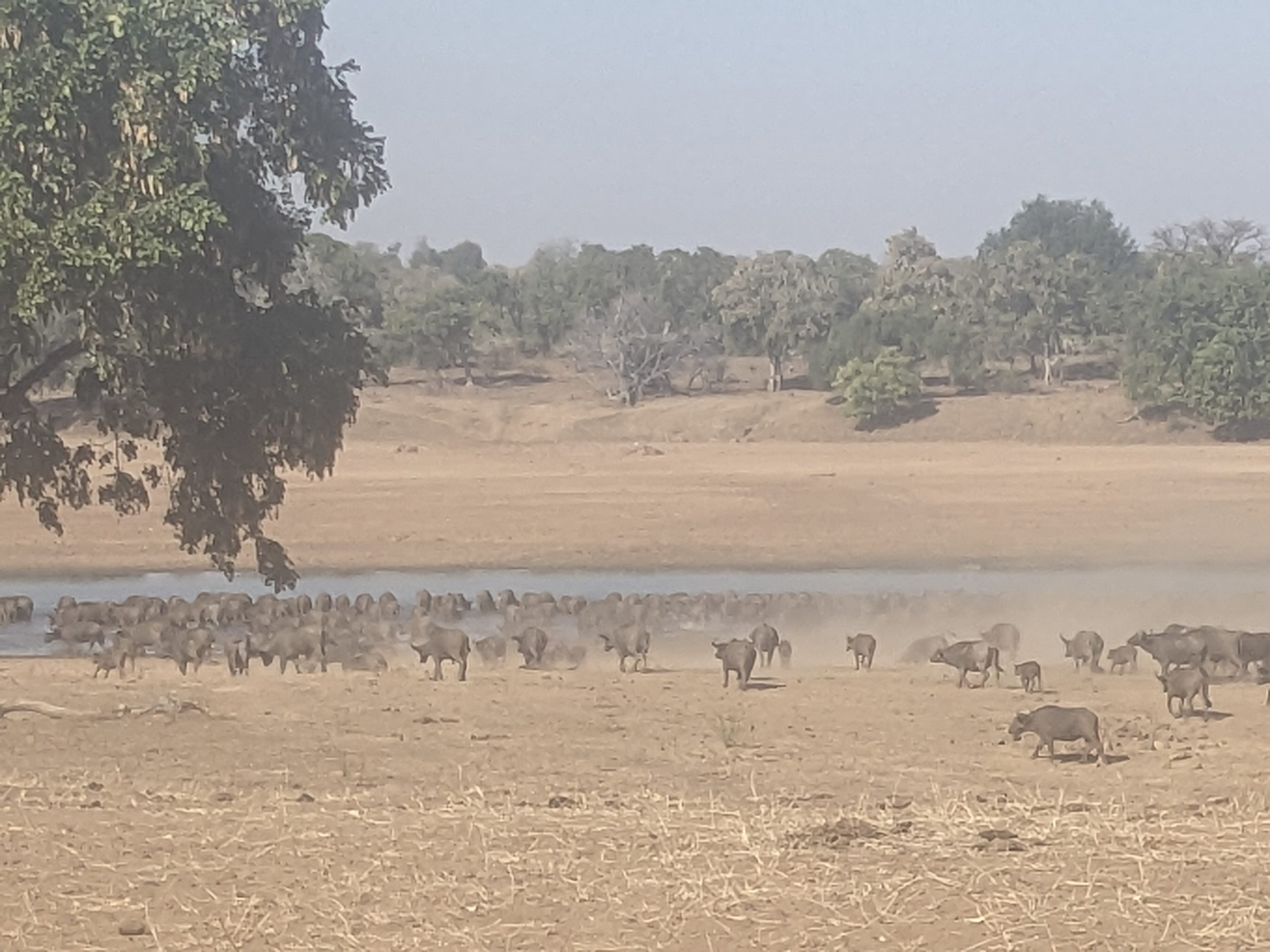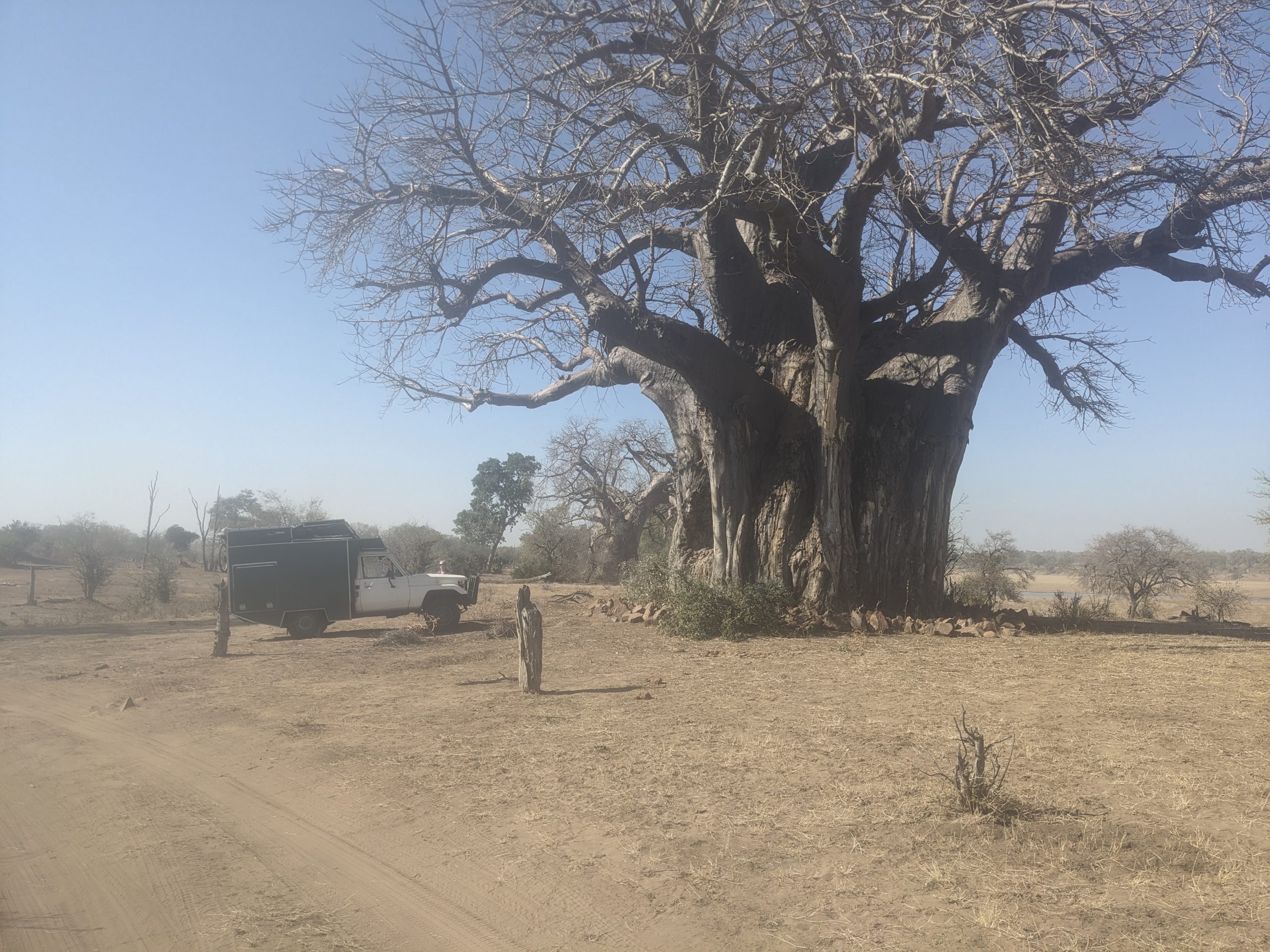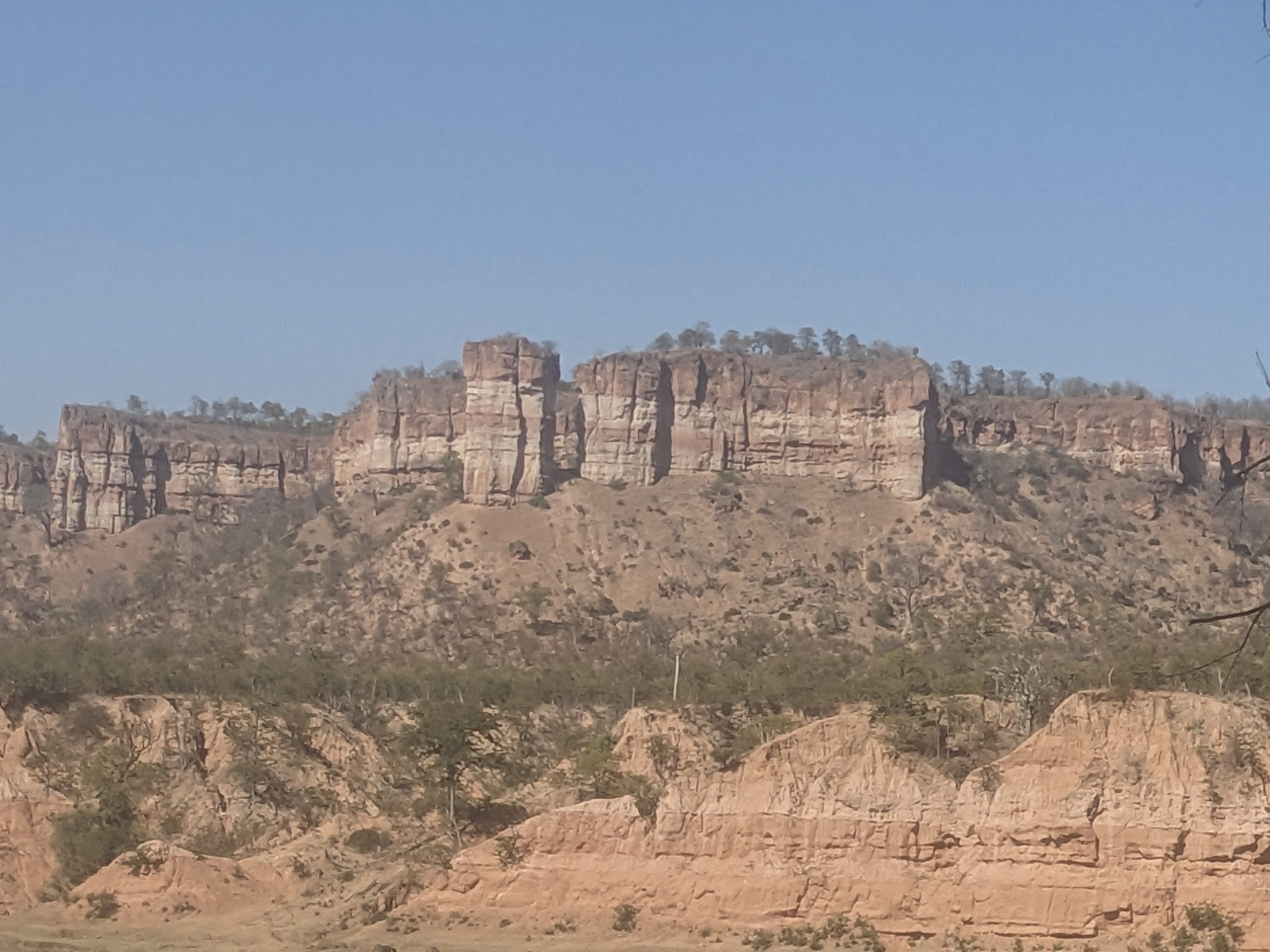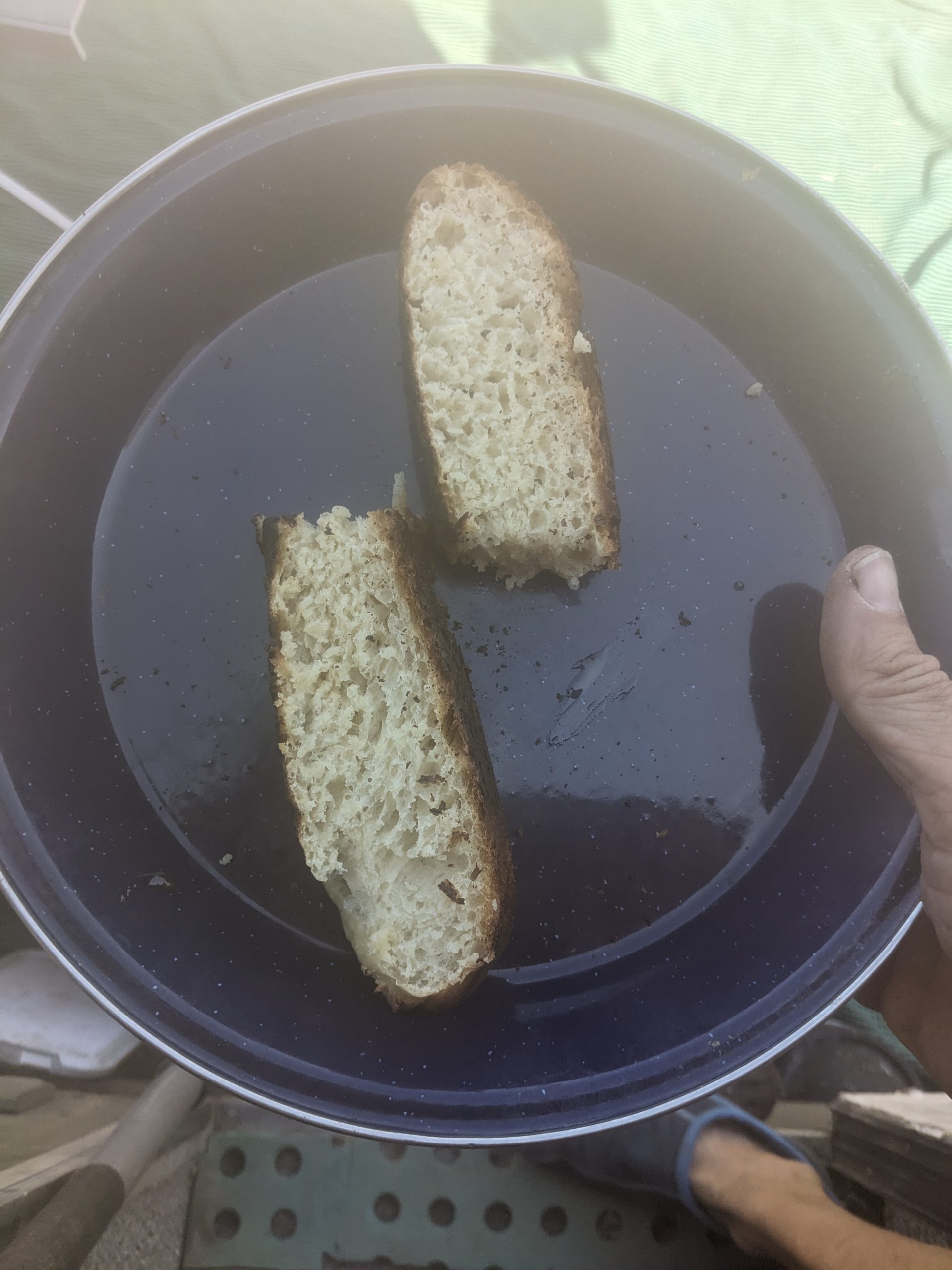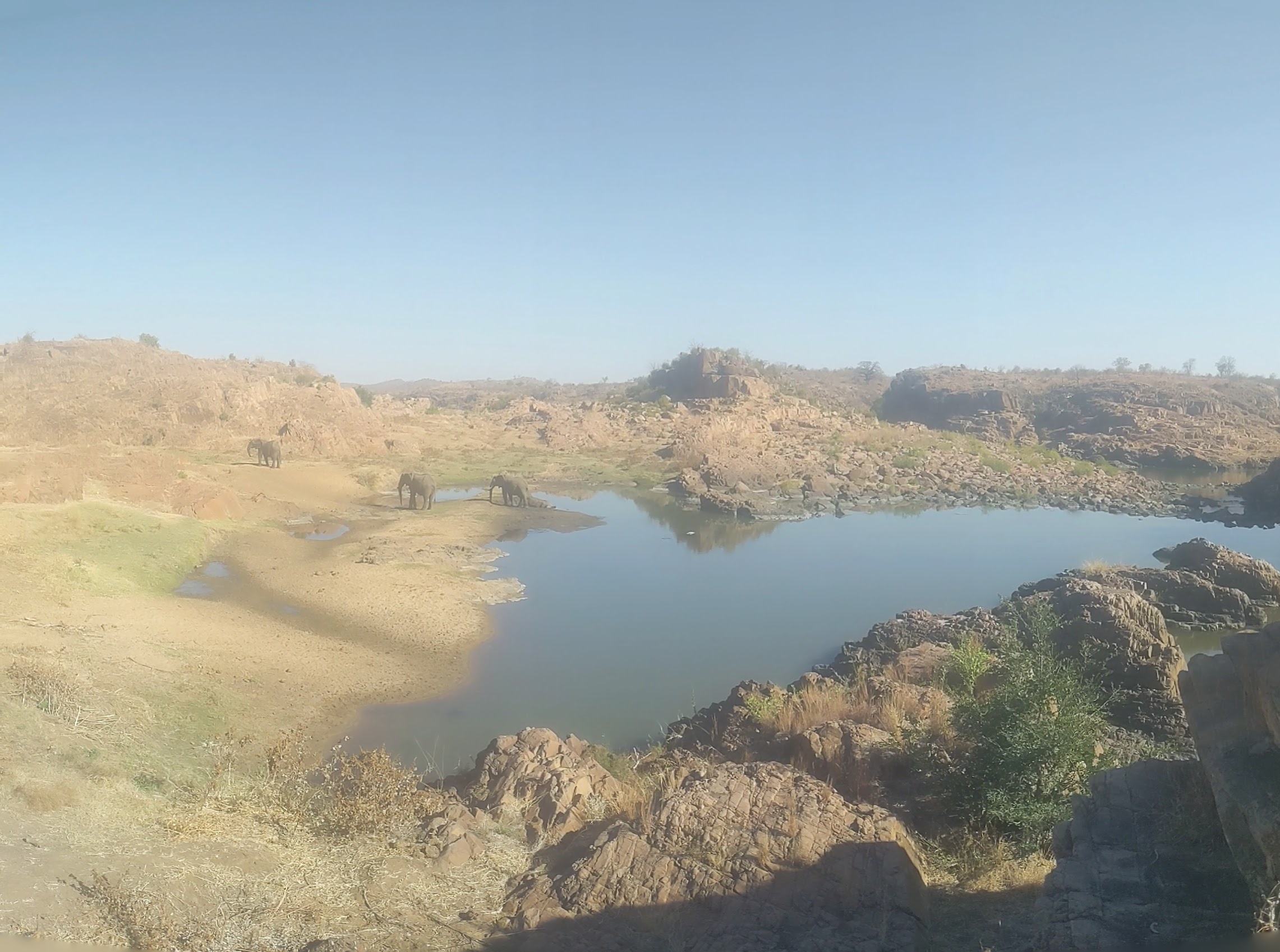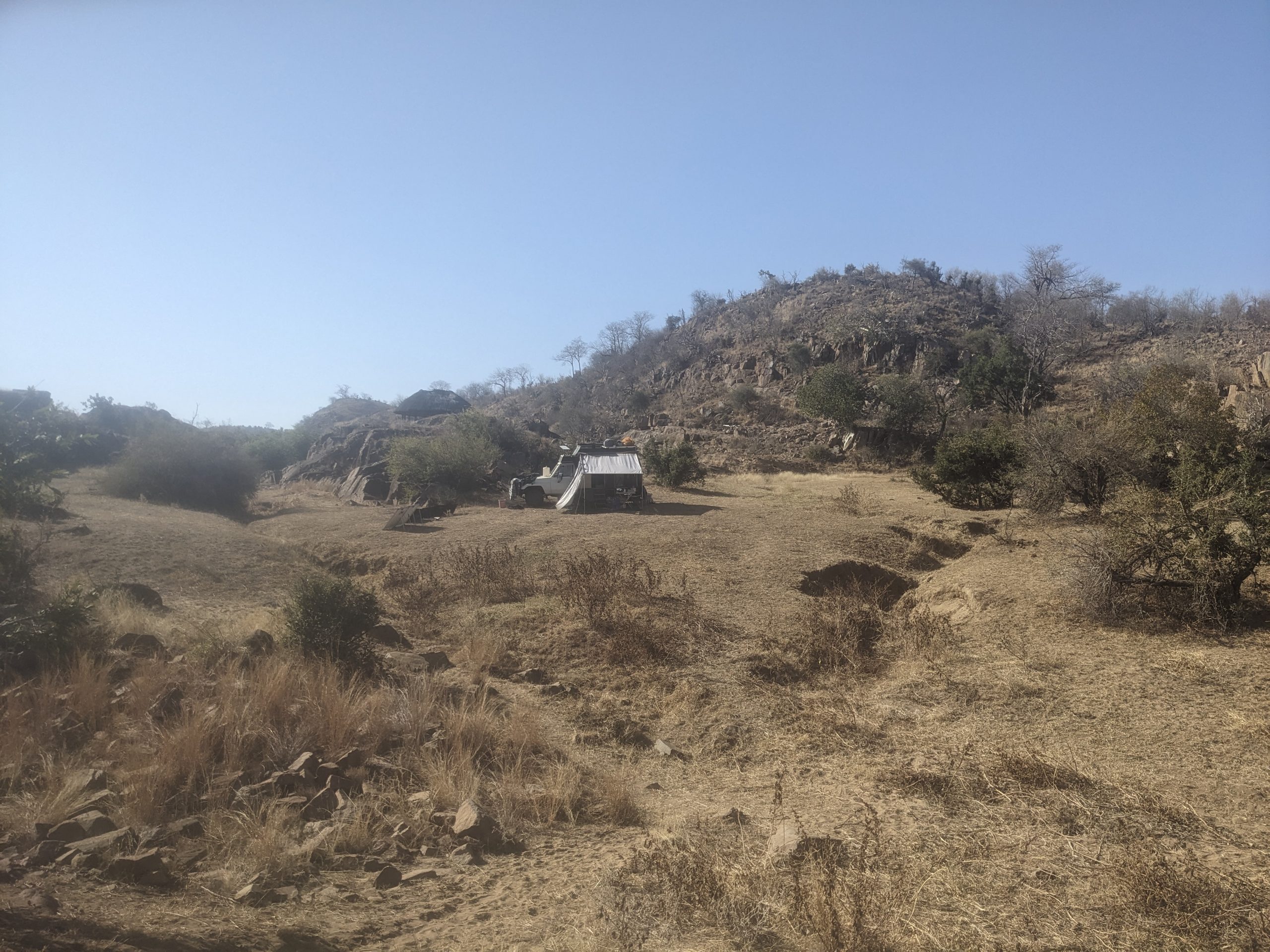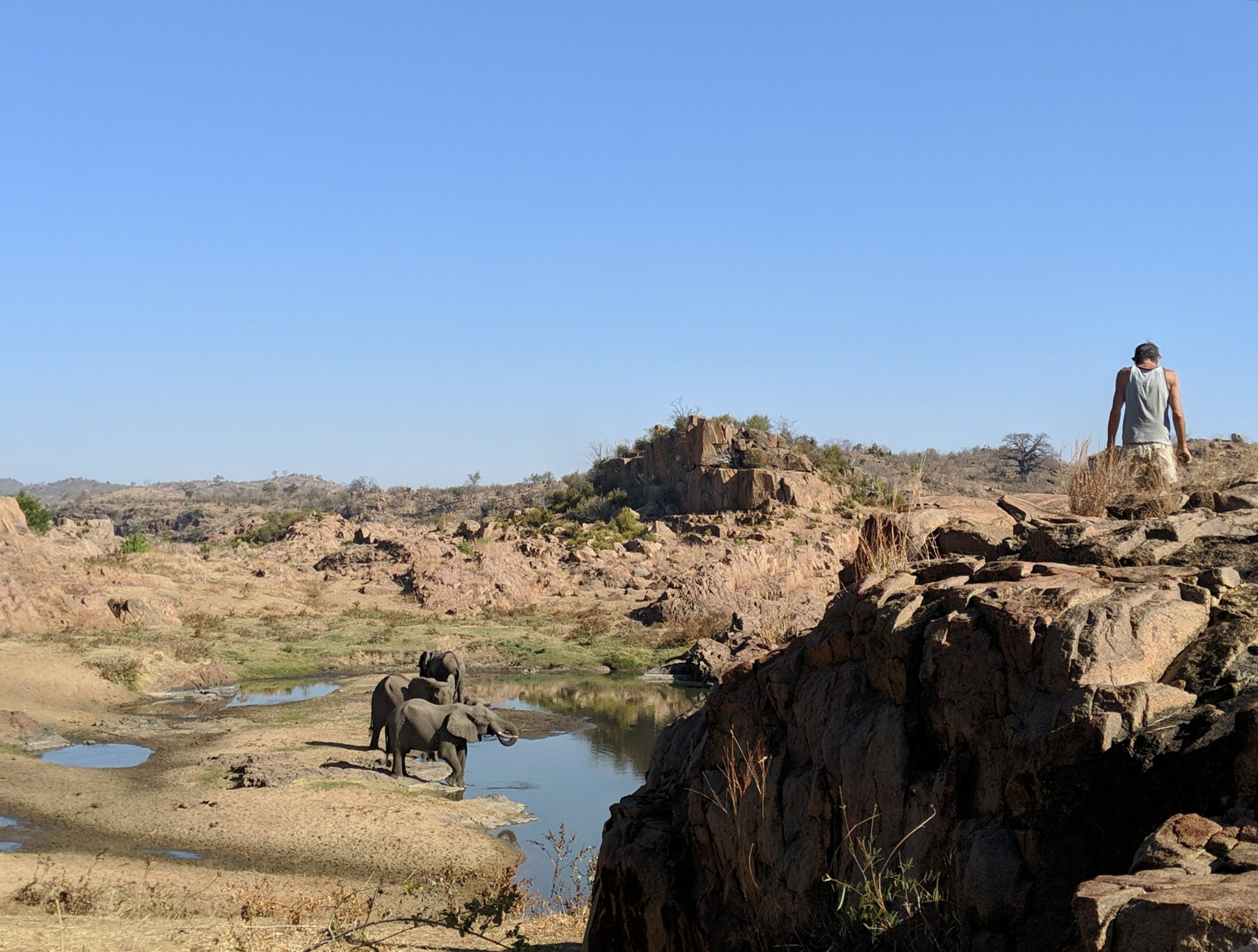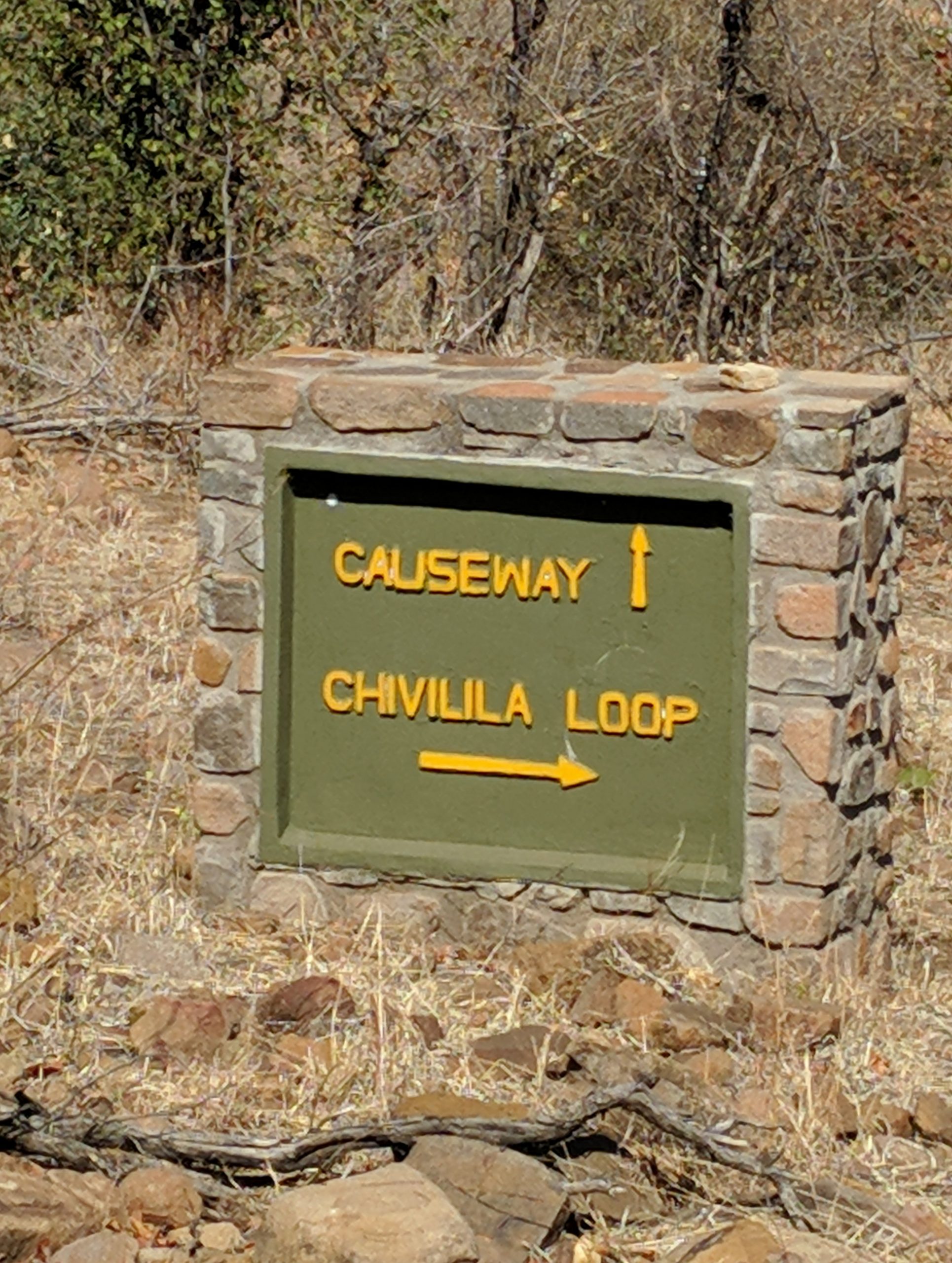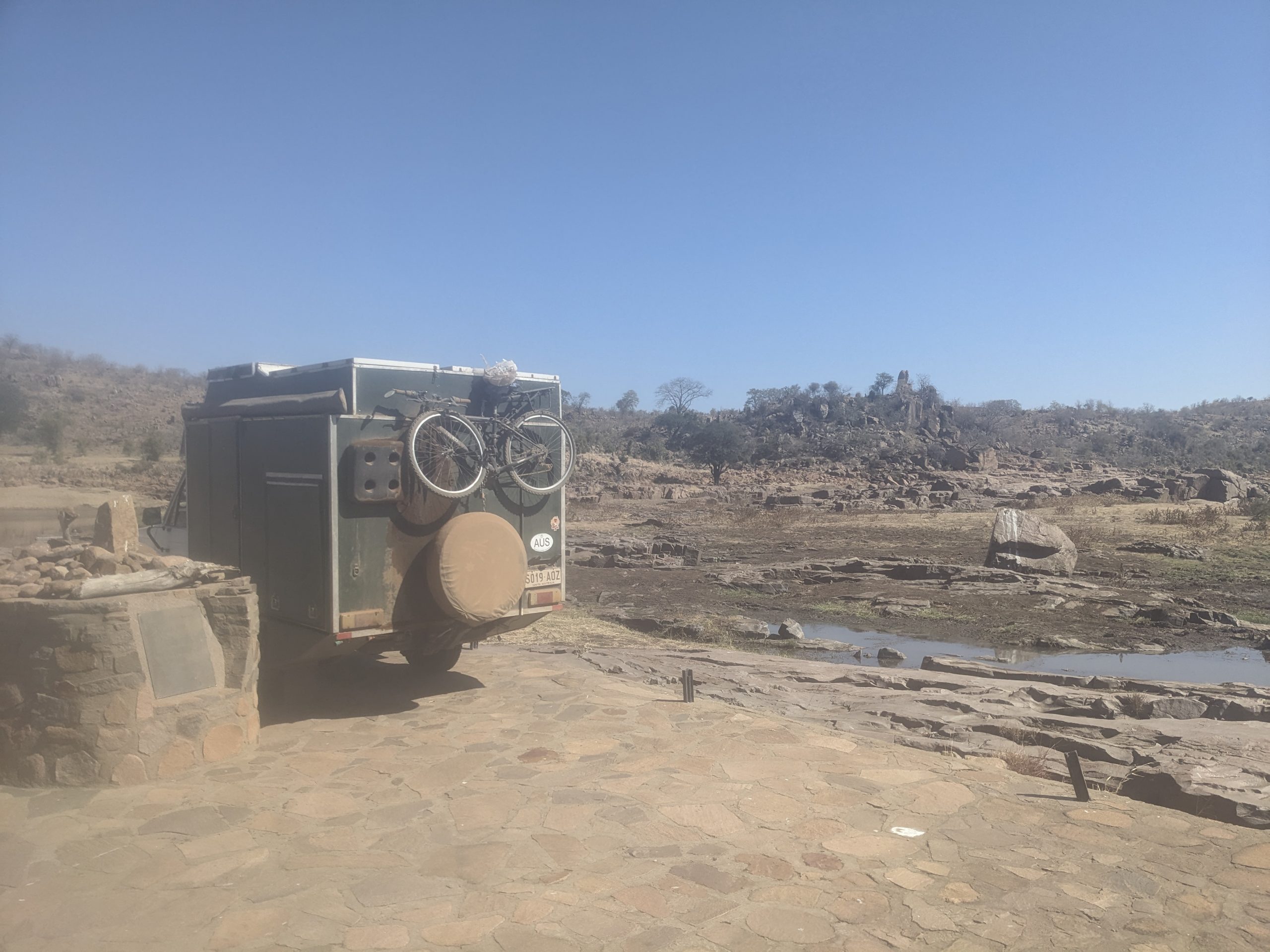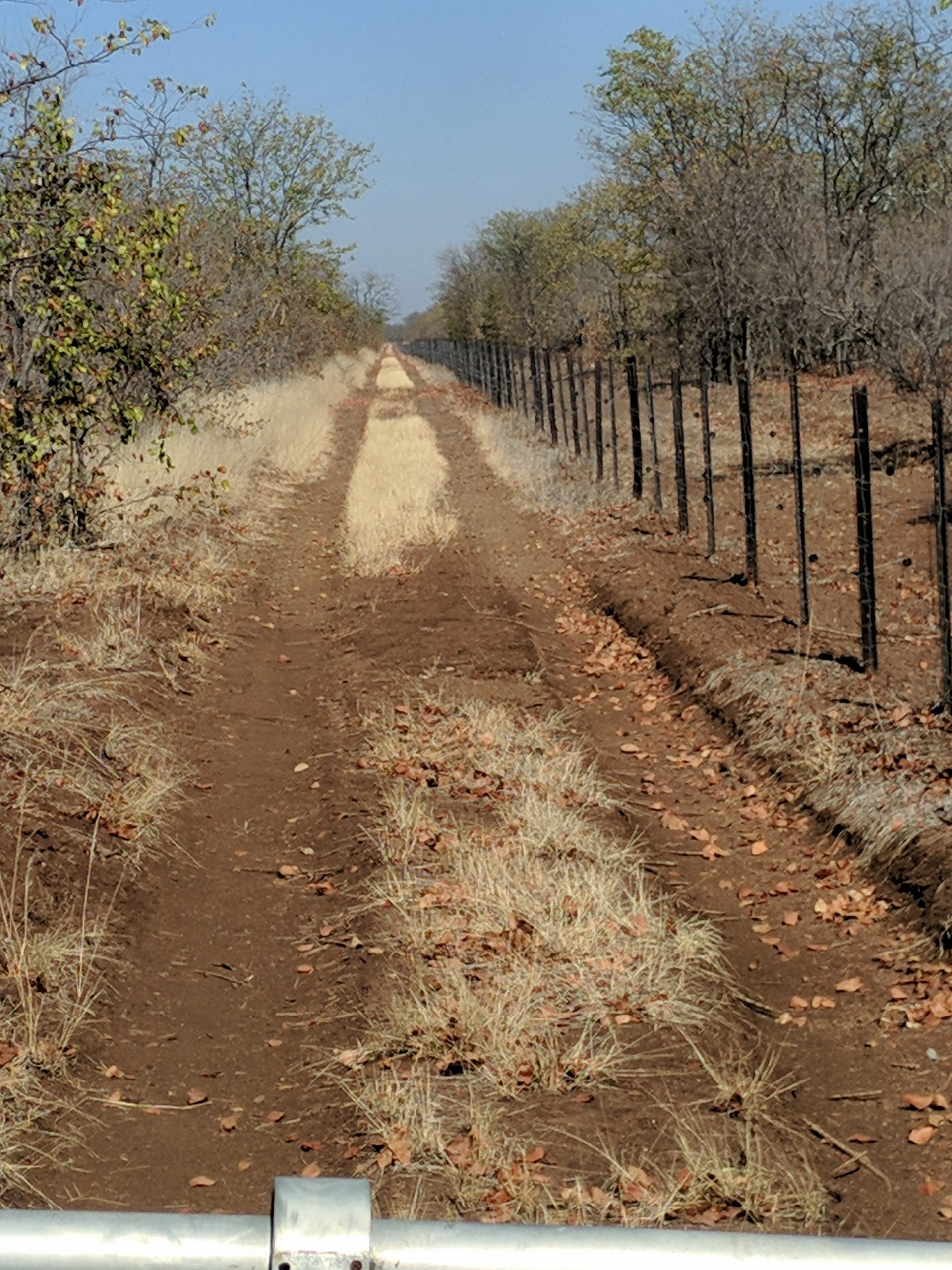I knew I had a long way to go, 120km, so I was up at 6am to leave as soon as I could. A few things went wrong but I did get going by 7:30am.
2km up the track I found very fresh Elephant tracks, it looked to me from the previous night. I then did a sharp turn west. I realise that traveling east and west is easier. The dunes which are low and far apart tend to run west east. So when you are heading north you are constantly crossing dunes, which makes it much harder going. When heading west you are running mostly in the interdune space that tends to be less sandy. The track west is somewhat overgrown. You constantly hit bushes either side. I should have pulled my mirrors in, and that mistake cost me one broken mirror on the drivers side. As well I managed to rip off the rear right-hand mudflap. The mudflaps are a running joke, I rip one or both off every trip, I am always fixing them.
I went through a section where elephants had pushed over trees, and generally caused mayhem.
I stopped for a stretch on the track at one time just randomly and in front were Elephant tracks, and at the back I thought there were lion tracks. I was making good time, I spent a lot of time in third gear meaning I was doing 20km and hour or more. 80km in I saw some giraffes on the road ahead. I crept up, and could see two adult giraffes and one baby. They got off the road, but they were happy to watch me while I watched them. I left them to it, with one of the Giraffe I could hear but not see ripping things of trees.
I turned over the road to Xade up to XaXa (which on the park map is called XaKa, but tracks4Africa has XaXa). I went to the solar powered waterhole that was full of vultures, and another flocking bird that I couldn’t identify. The vultures were riding the thermals all over the place. I drove up the sand dunes to the campsite that looks down on the plains.
